[8 times more nutrition! ] Introducing how to freeze clams, storage period, and 5 recipes
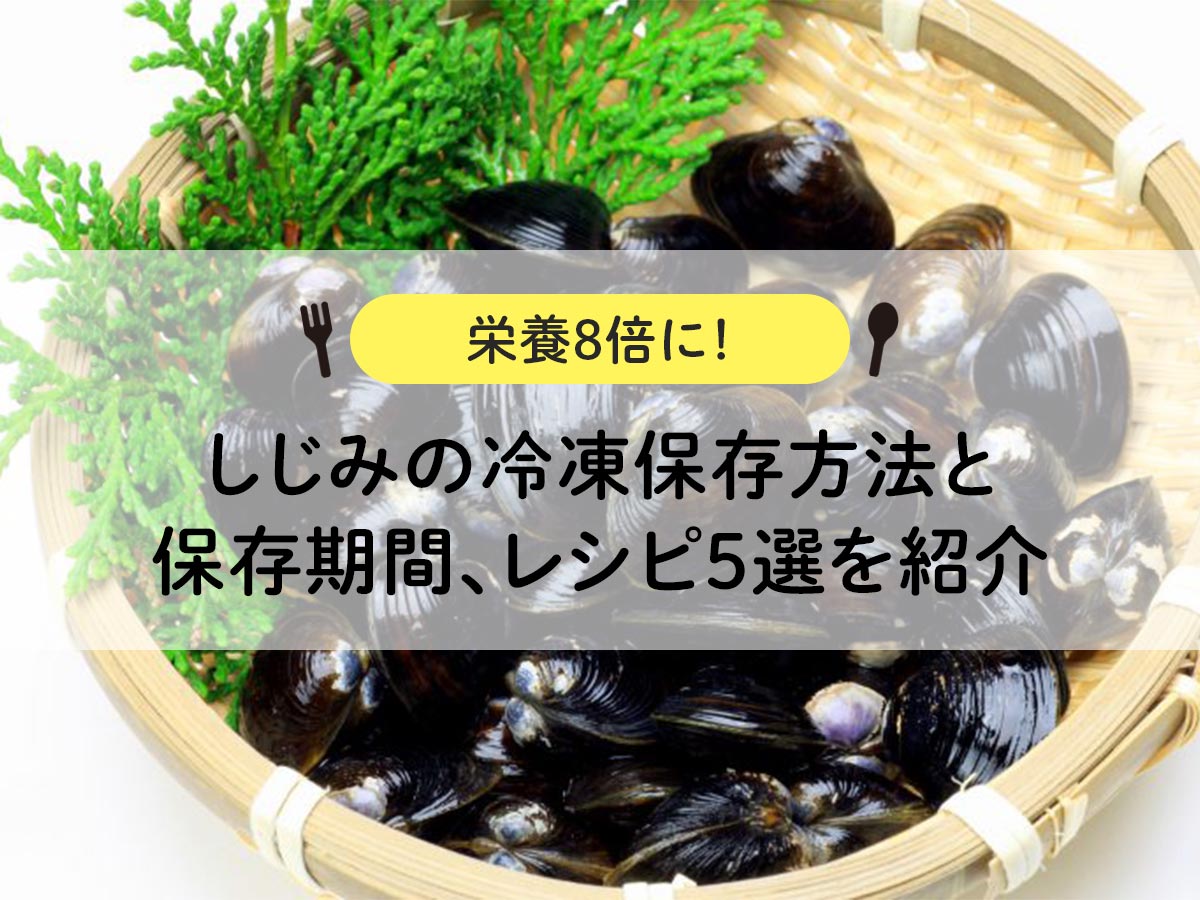
Did you know that clams can be frozen in their shells?
Many people have had the experience of freezing bivalves and not being able to open them.
In order to open your mouth, it is important to freeze the food properly before cooking.
Many bivalves, including clams, can be frozen and enjoyed with their shells still on.
Not only can you preserve it for a long time, but freezing it also increases its flavor and nutrients.
Freshwater clams are packed with ornithine, which is highly effective in improving liver function.
If you store wisely in the freezer, you will have more opportunities to eat clams, and you can expect health benefits as well.
Additionally, stocking up on items when they're on sale and doing the tedious prep work all at once will save you time and money when cooking.
We will introduce how to remove the sand from clams, the specific benefits of freezing them, how to freeze them so they open properly, how to thaw them, and recommended recipes using frozen clams.
目次
- 1Advantages of freezing freshwater clams
- 2 How to freeze freshwater clams
- 3 How to thaw frozen clams and storage period
- 45 easy recipes using frozen clams
- 4.1 No need for soup stock with frozen clams! Delicious miso soup
- 4.2 Recommended for finishing! Easy frozen shijimi ramen
- 4.3 Unstoppable deliciousness! Frozen clams with garlic soy sauce
- 4.4 Save time with frozen clams! Seafood cooked rice
- 4.5 Increase the flavor with frozen clams! Nibidashi with Komatsuna
- 5 Conclusion
Advantages of freezing clams
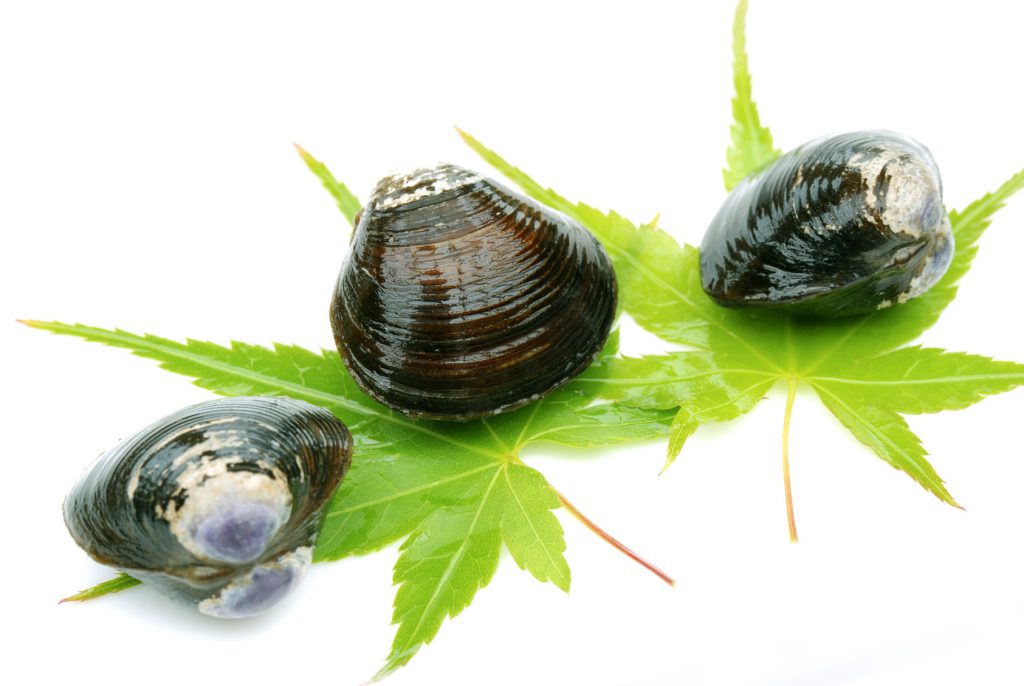
Increases flavor components and nutrients
Freezing the clams breaks down the cells, making it easier for the umami ingredients glutamic acid and alanine to be absorbed, making them more delicious.
Furthermore, ornithine, a typical nutrient in clams, increases eight times when frozen.
According to experiments conducted by the Aomori Industrial Technology Center, ornithine increases the most when fresh clams are frozen at -4℃.
Home freezers are said to have a temperature of -18℃, but in reality they cannot maintain a constant temperature because cold air escapes when they are opened and closed.
Wrapping it in newspaper slows down the transmission of cold air, and by placing it in a place where it is frequently opened and closed, it can be frozen at temperatures close to ideal even with the performance of a home freezer.
In Taiwan and South Korea, people have traditionally frozen clams before eating them.
Even if they didn't understand the principle behind it, they could feel how delicious it was, so it was passed on as a piece of wisdom.
Allows long-term storage
This is a standard benefit of freezing, but the fact that you can store clams for a long time is also a great benefit.
Since clams are fresh, they don't last very long.
They can survive for a few days without being submerged in water, but because they cannot absorb nutrients, their bodies become thinner over time.
It is better to prepare the food while it is still fresh and store it in the freezer so that it stays delicious for a long time.
Reduces cooking time
By pre-processing the clams and storing them in the freezer, you can save time on cooking.
Shijimi requires a lot of preparation such as removing sand, so it cannot be used for cooking immediately after purchasing.
Frozen clams are easier for busy housewives to use than fresh clams, which require a lot of preparation.
After removing the sand from the clams for 4 hours, they are left in the air for 3 hours to increase the succinic acid that gives them their umami flavor, making them more delicious.
By buying in bulk when it's on sale, completing the prep work in one go, and freezing it, you can save money and shorten cooking time.
Freezing is recommended when you buy a lot at a bargain sale at the supermarket or when you collect a lot of clams.
If you prepare the food all at once and freeze it, you can use it right away when you want to use it.
How to freeze clams
1. How to remove sand from clams
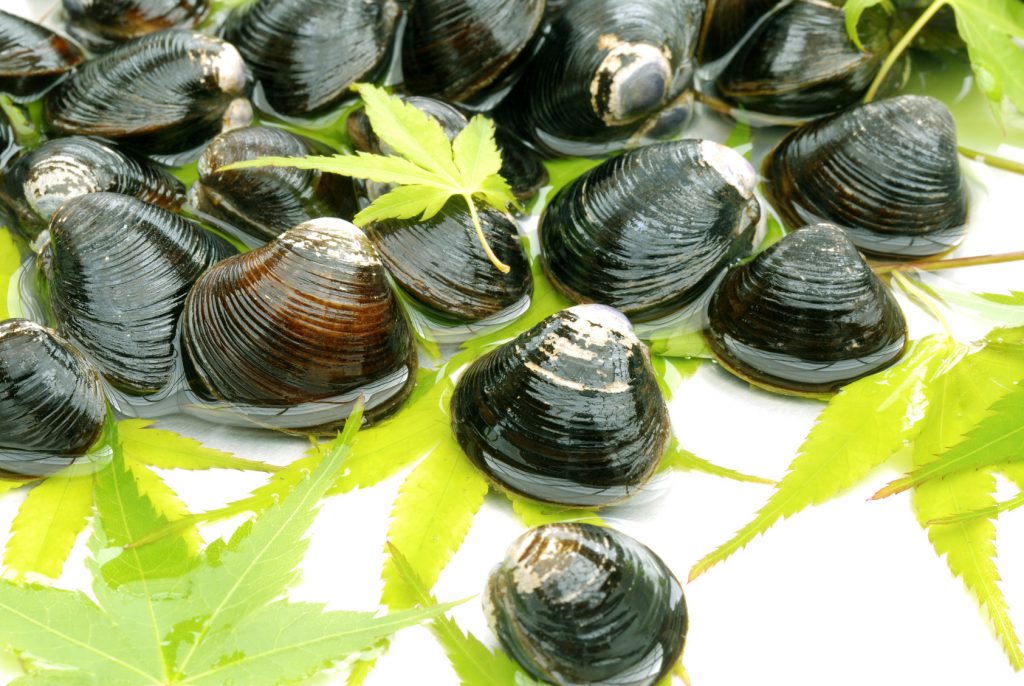
Before freezing clams in their shells, be sure to remove the sand.
Freezing will kill the clams, so they won't spit up sand after thawing.
In order to enjoy delicious freshwater clams, you need to prepare them even if you do not freeze them.
1) If the surface of the clams is dirty, wash them by rubbing them together under running water.

2) Make 1% salt water in a bowl.
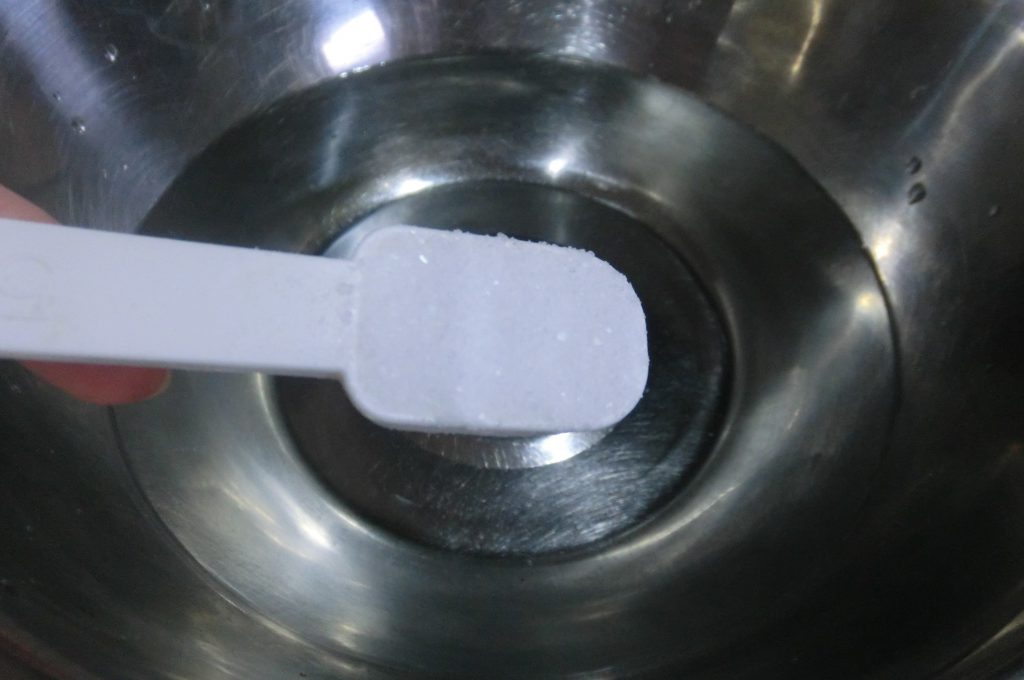
If you add 1 teaspoon of salt to 500ml of water, it will become 1% salt water.
Yamato clams, which are mainly sold in supermarkets, live in brackish waters where seawater and freshwater are mixed.
By removing sand with water that has a slightly higher salinity than the area where they live, the clams produce flavor components such as alanine and succinic acid.
3) Place the clams in a colander, making sure not to overlap them.
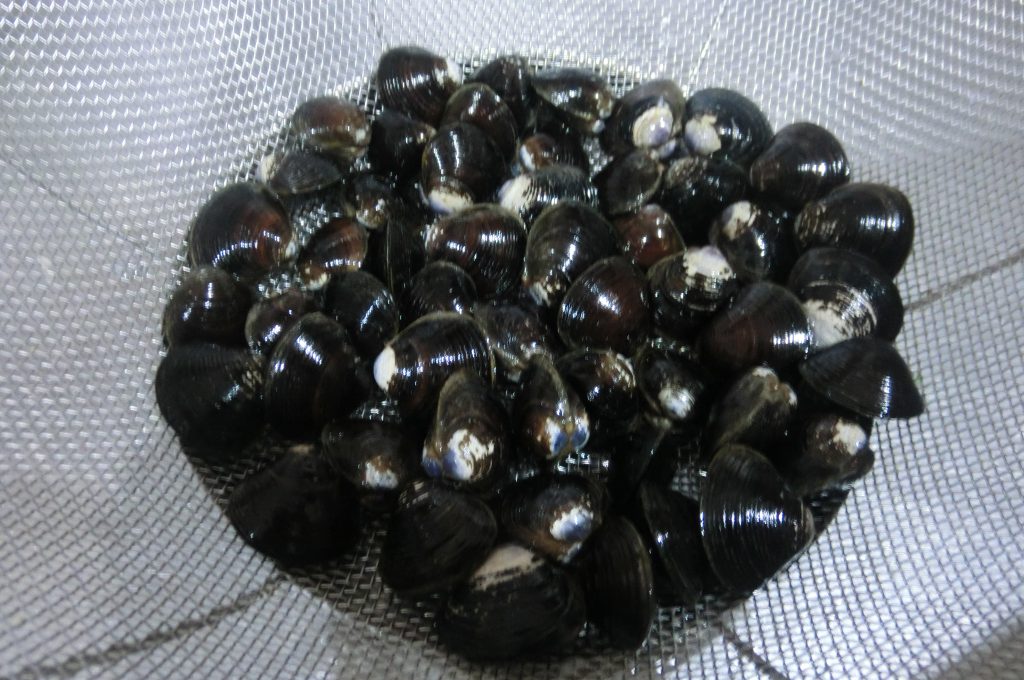
If the clams overlap, the sand thrown up by the clams on top may be sucked up by the clams on the bottom.
4) Place a colander in a bowl and adjust the depth so that the salt water covers the clams.
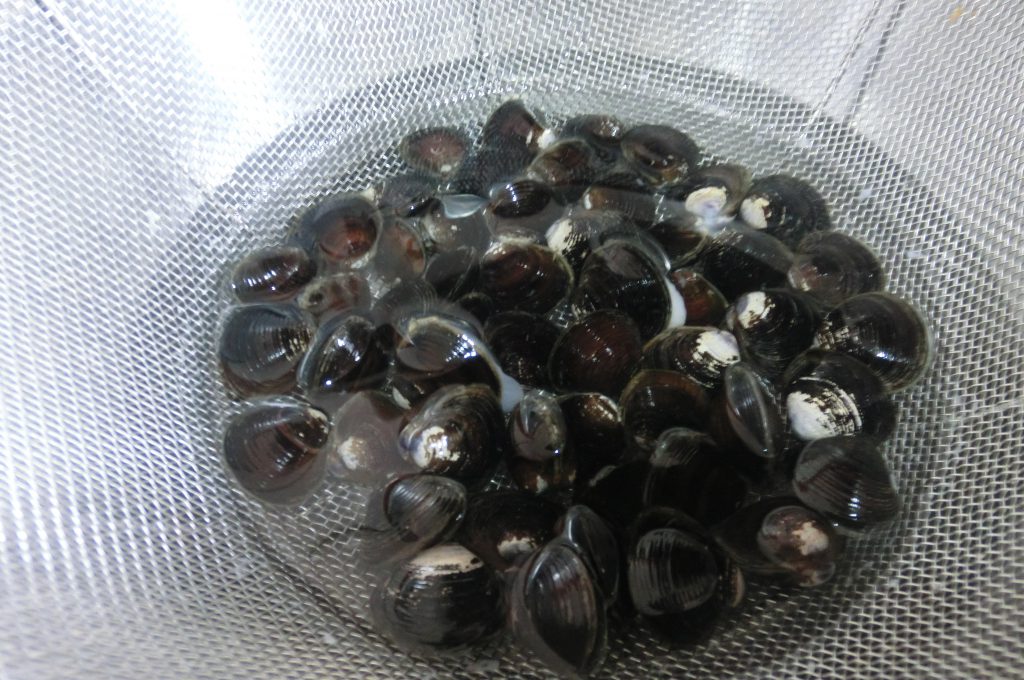
If you put fresh clams directly into the bowl, you'll end up sucking up the sand you spat out again, which takes time.
If the amount of salt water is too large, the clams may suffocate, so adjust the depth to a point where the clams can expose their heads and breathe.
5) Cover the ball with newspaper, make it dark, and leave it in a quiet place for about 4 hours.
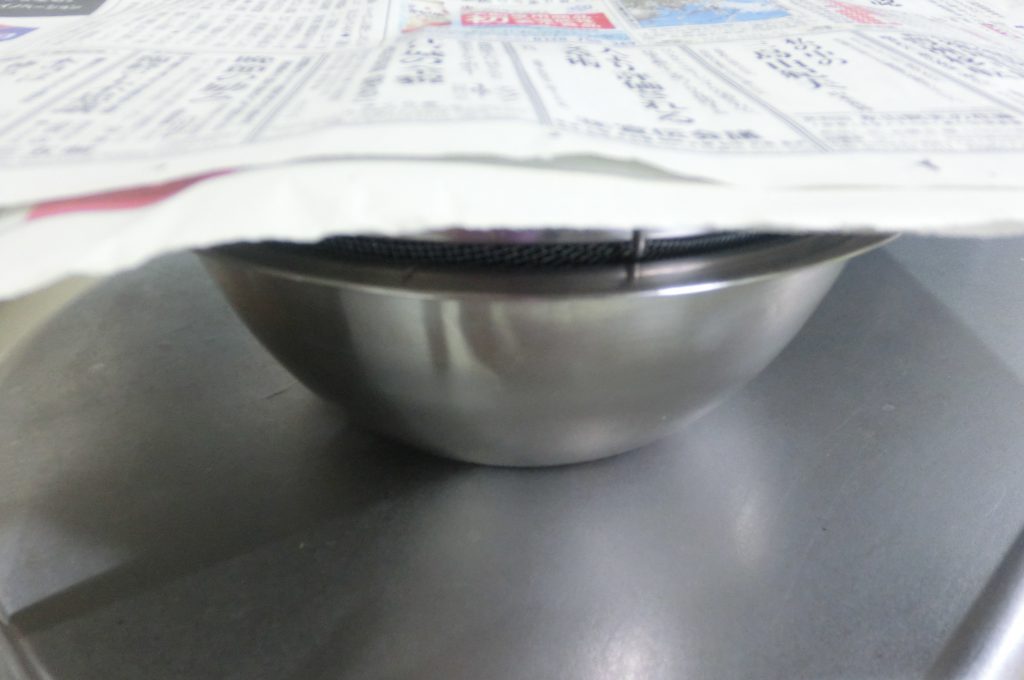
If the water is too cold, the shimmers will be frightened and stop spitting out sand, but if the water is too hot, they will rot.
The optimum temperature for salt water is around 15 to 20 degrees Celsius.
6) Thoroughly remove dirt from the surface by rubbing the shells together under running water.
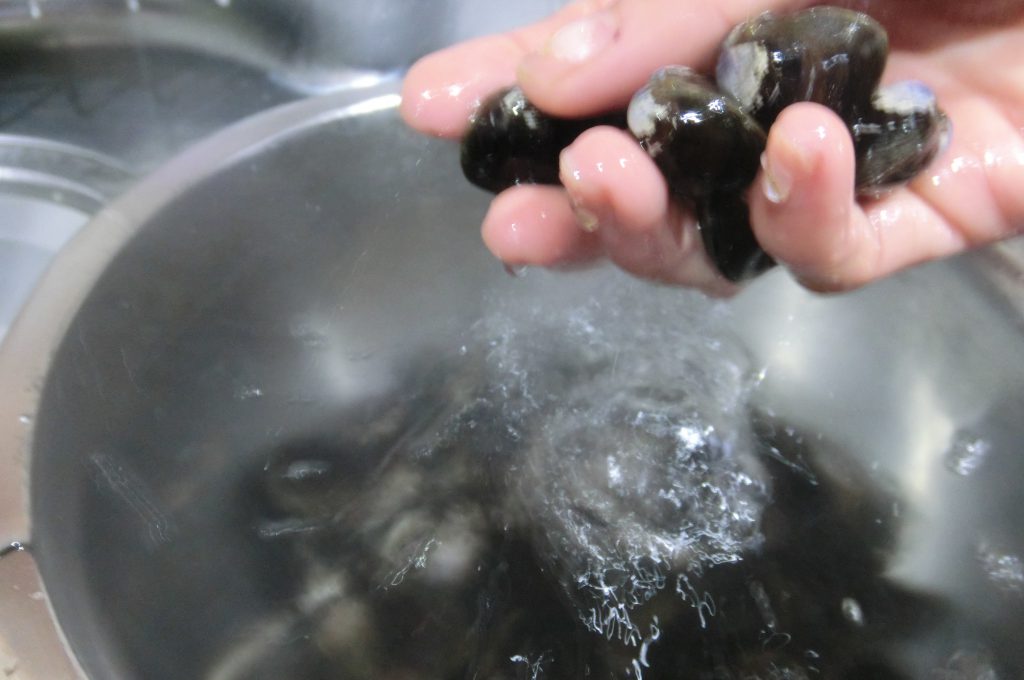
7) Drain in a colander, cover with a wet cloth, and leave at room temperature for about 3 hours.
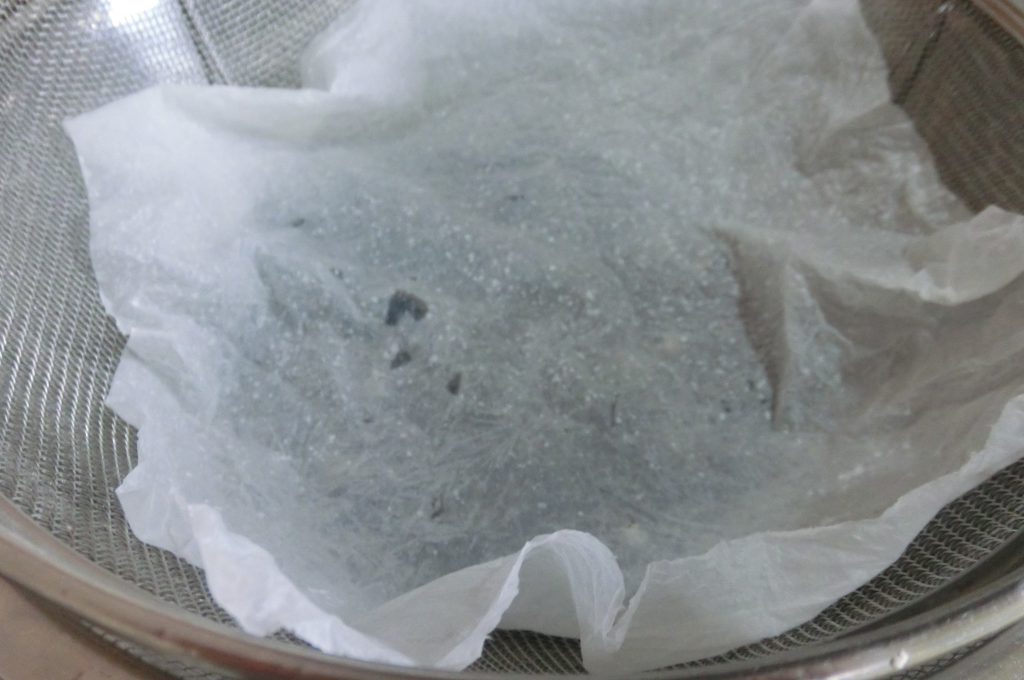
In order for clams to produce energy, they break down glycogen to produce succinic acid, which is a flavor component.
By leaving it in the air, succinic acid increases and it becomes delicious.
2. How to freeze clams with their shells on
1) Thoroughly wipe off the water from the prepared clams with kitchen paper.
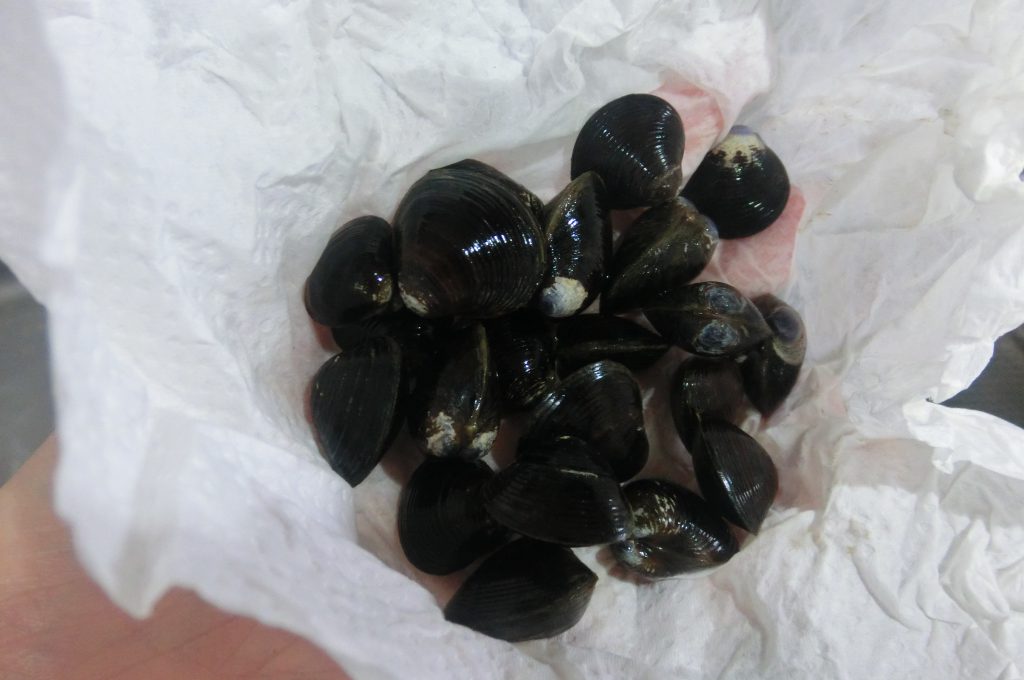
If there are dead freshwater clams mixed in, the odor will spread to other freshwater clams, making them inedible.
Remove any with open mouths or cracked shells.
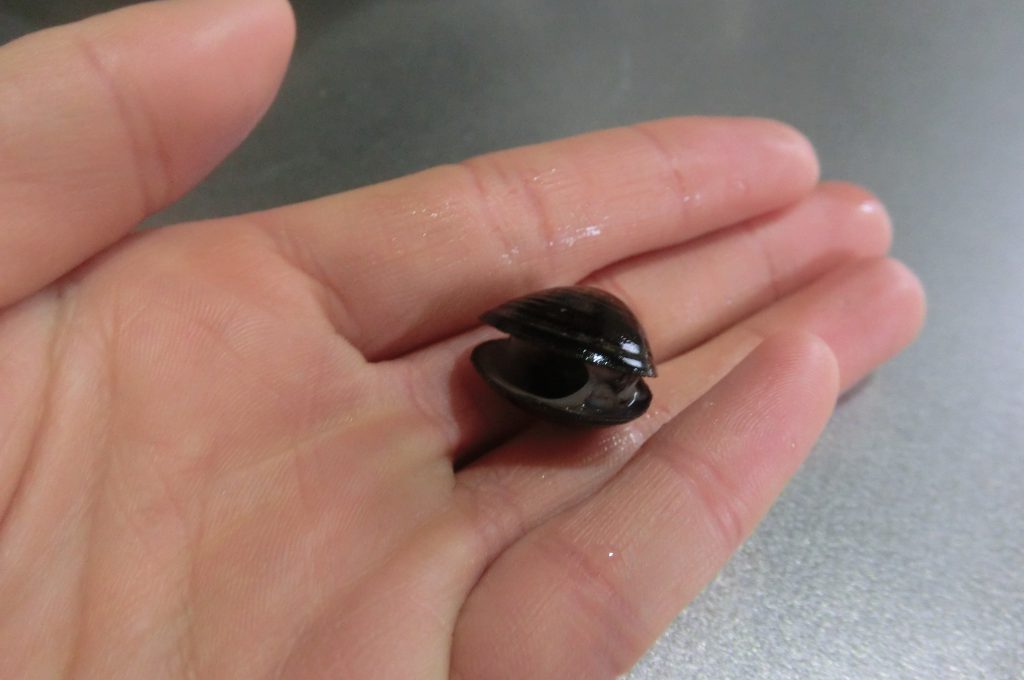
2) Place them in a ziplock bag as flat as possible without overlapping them, and remove the air.
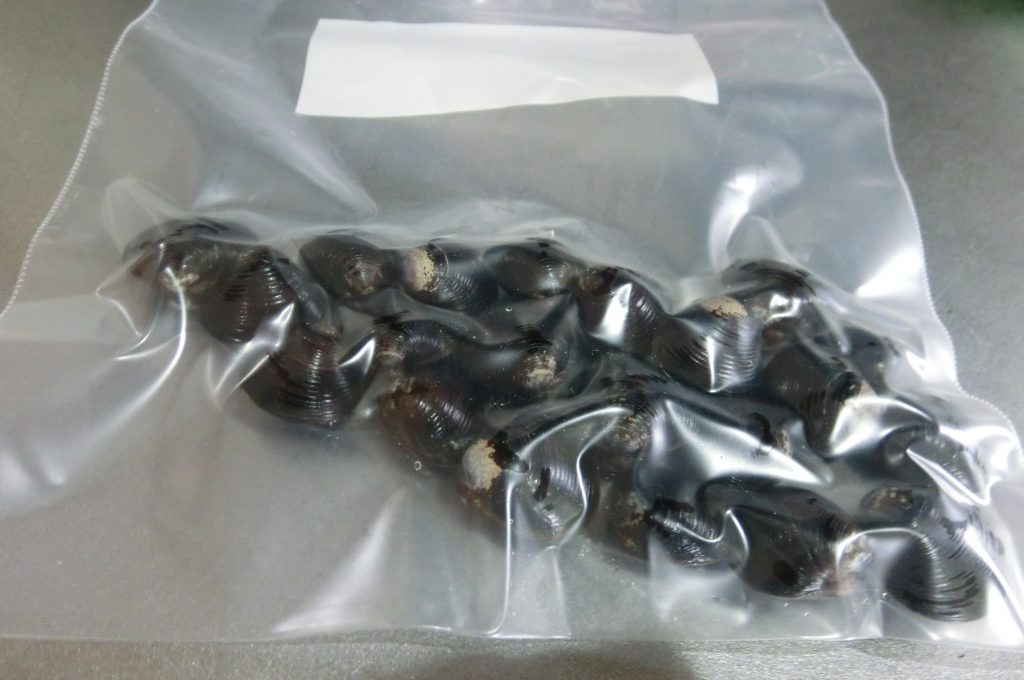
3) Wrap it in newspaper and place it in the freezer in a place that is frequently opened and closed, and freeze it as slowly as possible.

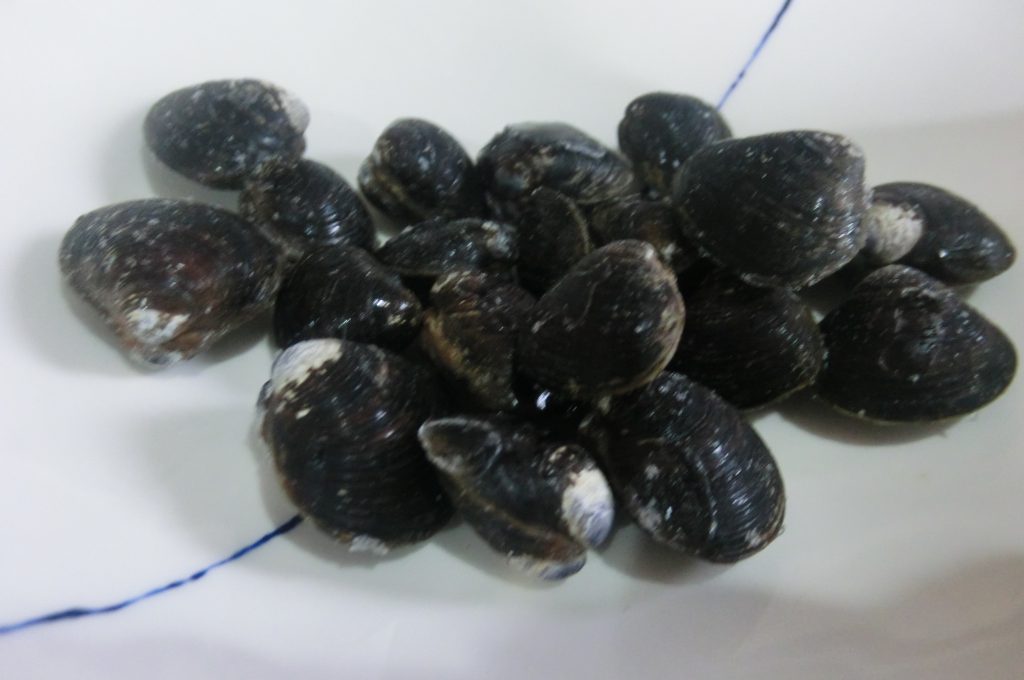
If you have a large amount, wrap each serving in plastic wrap and place it in a ziplock bag.
Alternatively, after about 2 hours, when the clams are semi-frozen, squeeze the Ziploc bag to prevent the clams from sticking together.
3. How to peel and freeze clams
1) Place the prepared freshwater clams in a pot, dry-roast them, and open them.

Be careful not to overcook or the meat will shrink.
If you have a large quantity, you can also boil the clams and scoop out the flesh that floats to the top.
The boiled water contains nutrients and flavor, so it's good to use it for things like miso soup.
2) Remove the flesh from the shell, peel the clams, wrap each portion in plastic wrap, and place in a ziplock bag to remove air.
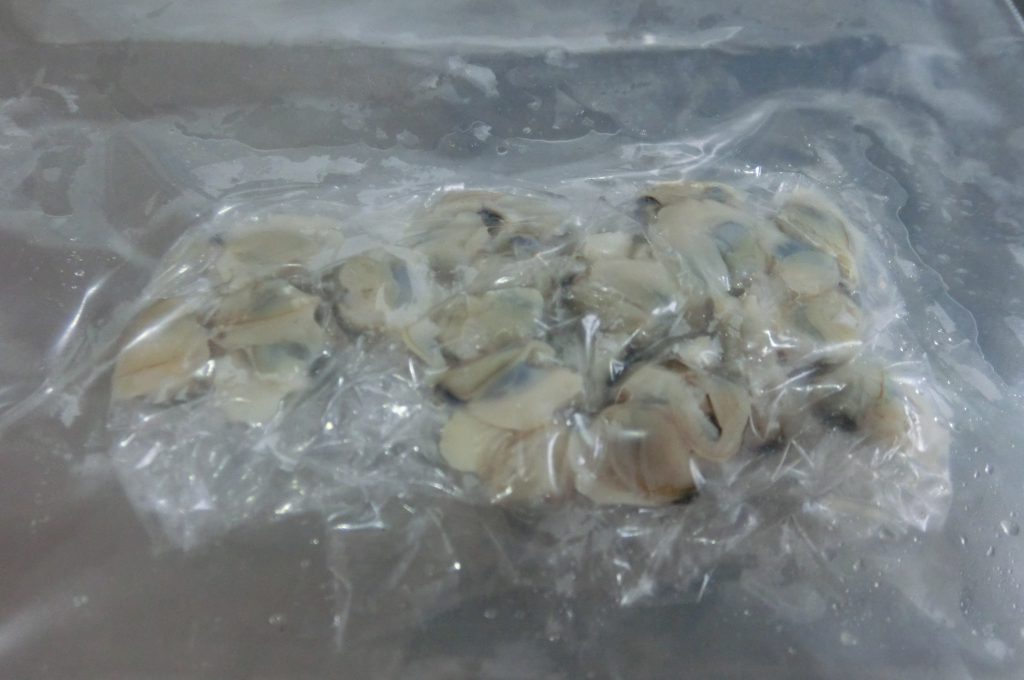
3) Wrap it in newspaper and store it in the freezer.

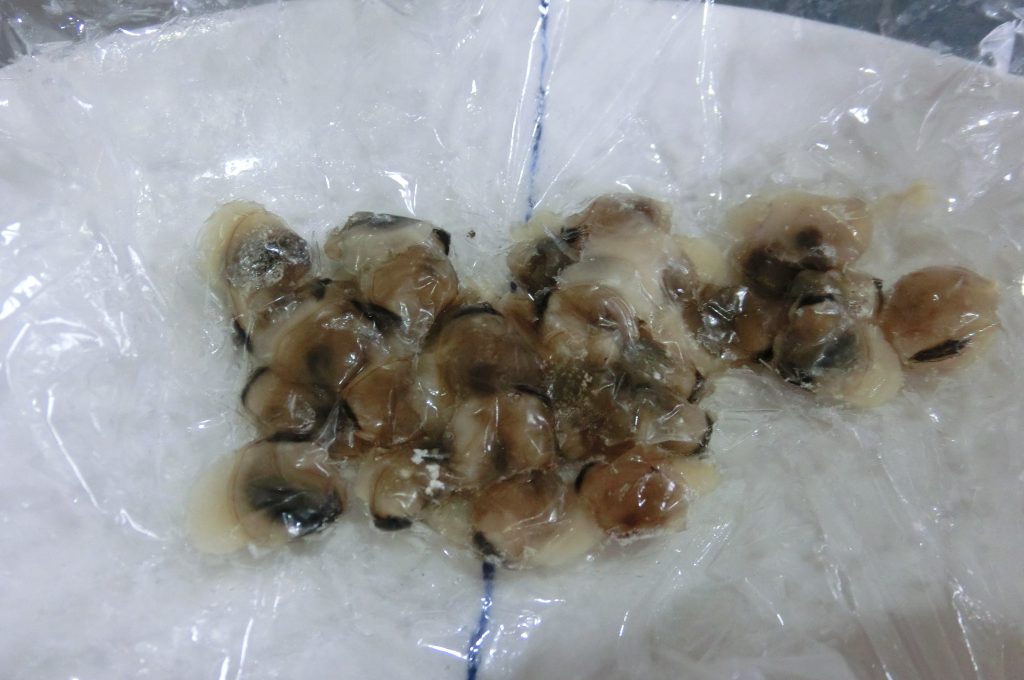
How to thaw frozen clams and storage period
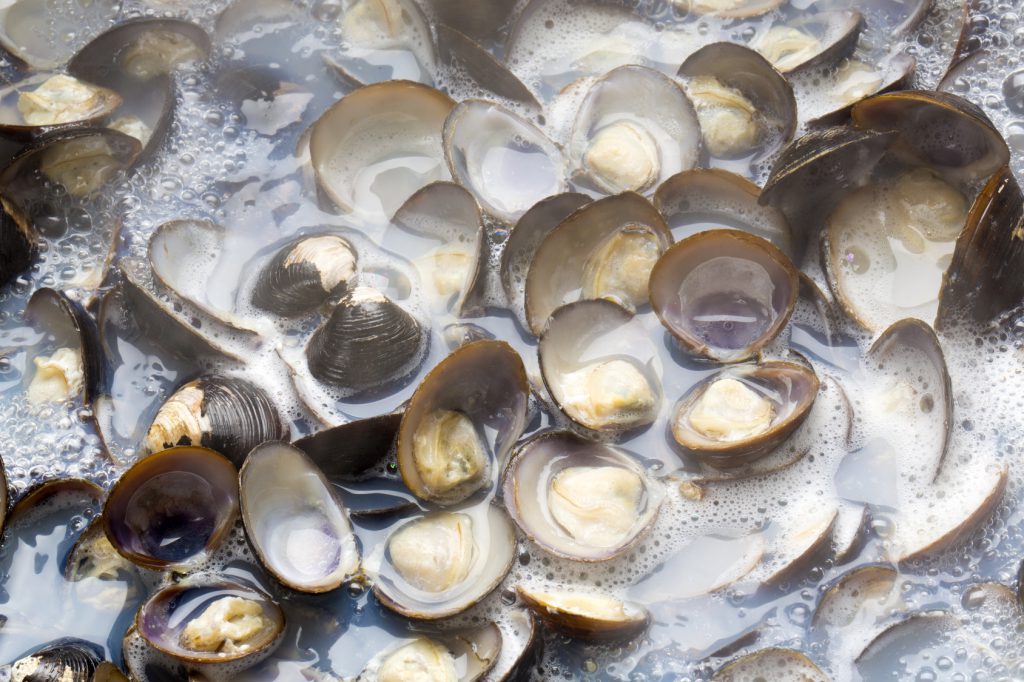
Next, we will talk about how to thaw frozen clams and how long they can be stored.
How to thaw frozen clams
Frozen clams, both shelled and shelled, can be cooked while frozen.
In particular, fresh clams that have been frozen in their shells will open due to sudden changes in temperature, so instead of boiling them in cold water, boil them in boiling water.
Even when cooking with other methods, the key is to continue heating over high heat until the shell opens.
Storage period of frozen clams
Frozen clams can be stored for about a month.
Although clams become more delicious when frozen, they cannot be refrozen once thawed.
If you have frozen clams with their shells on, be sure to take them out of the freezer just before cooking.
If you let it thaw naturally, the shell will not open, so be careful.
>> 3 points to keep in mind when preserving vegetables
>> Click here for how to freeze meat
>> Click here for how to freeze fish
5 easy recipes using frozen clams
No need for soup stock with frozen clams! Delicious miso soup
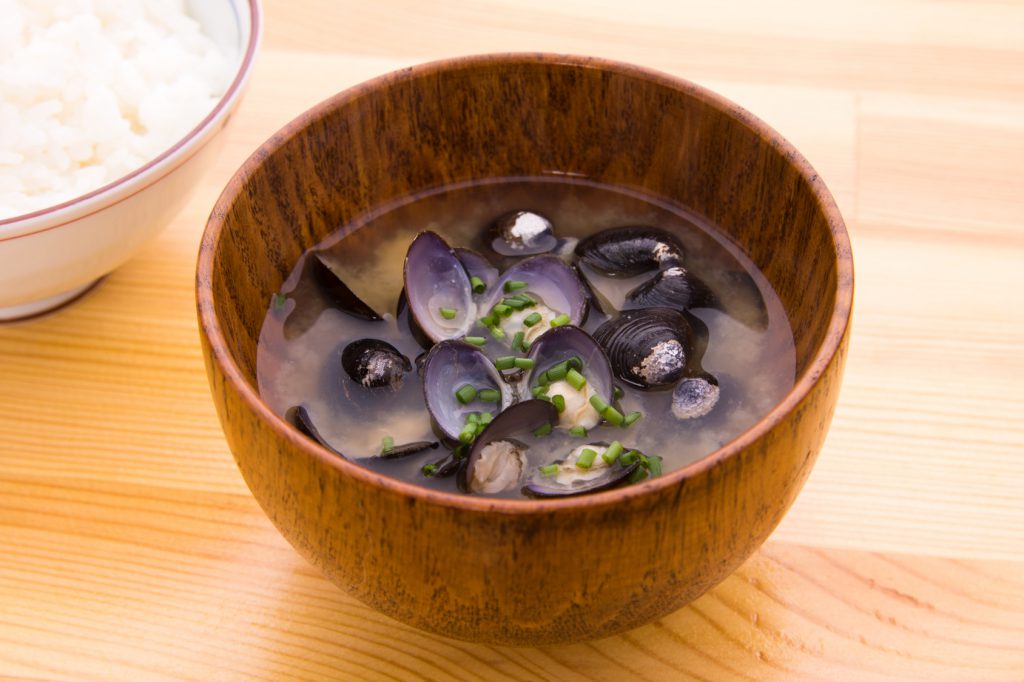
☑〈材料4人分〉
・冷凍しじみ 400ℊ
・味噌 大さじ4
・酒 小さじ1
・水 お椀4杯半
<<How to make>
1) Place the frozen clams in a colander and wash them lightly under running water.
2) Pour some water into a pot and bring it to a boil.
3) Add frozen clams to boiling water and add sake.
4) Once it boils again, reduce the heat to medium and simmer for 3 to 4 minutes while removing the scum.
5) Add miso and adjust the taste and it's done.
Please adjust the amount of water and miso to your liking.
Sprinkle some green onions for a beautiful color.
Recommended for finishing! Easy frozen shijimi ramen
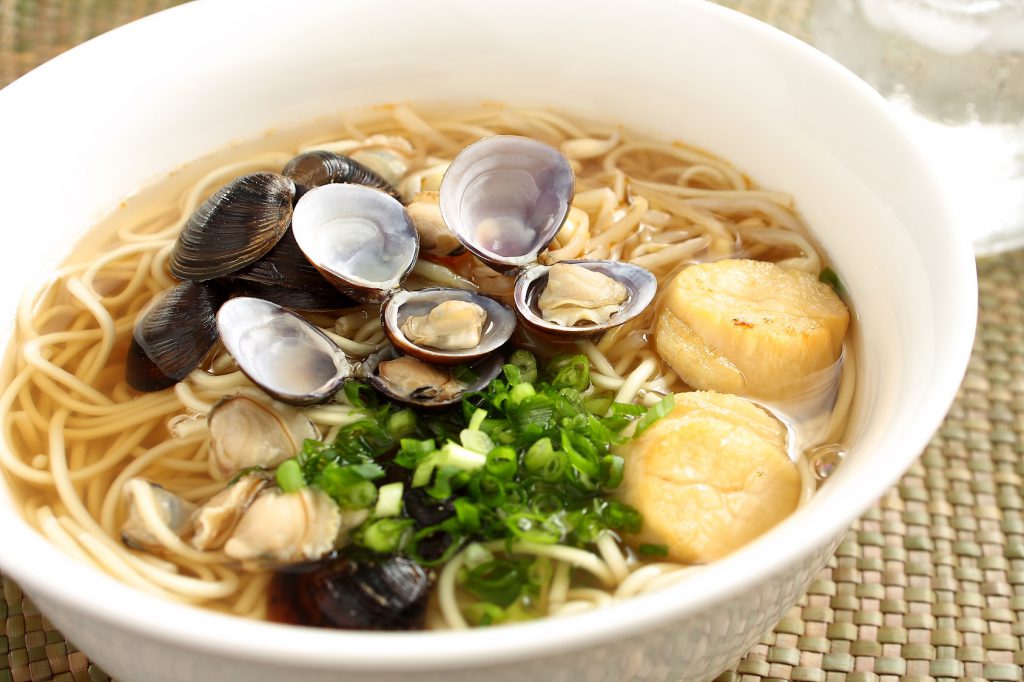
☑〈材料1人分〉
・冷凍しじみ お好みで
・即席ラーメン 1袋
<<How to make>
1) Pour the amount of water written on the instant ramen bag into a pot and bring to a boil.
2) Add the frozen clams and heat over high heat until the shells open.
3) Add the noodles and cook as directed on the package.
4) Pour it into a bowl and it's done.
Top with your favorite toppings such as seaweed, green onions, and boiled spinach.
Unstoppable deliciousness! Frozen clams with garlic soy sauce
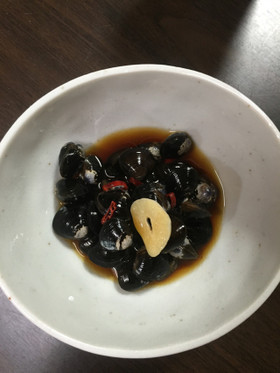
Source: https://cookpad.com/recipe/2980575
☑〈材料2人分〉
・冷凍しじみ 200ℊ
・酒 大さじ2
・醤油 大さじ3
・みりん 大さじ3
・ニンニク 生姜 各1片
・鷹の爪 1~2本
<<How to make>
1) Slice the garlic and julienne the ginger.
2) Place the lightly washed frozen clams in a pot, sprinkle with sake, and bring to a boil.
3) Once the shells open, turn off the heat, add all the remaining ingredients and mix gently.
4) Once it has cooled down, chill it in the refrigerator for 2 to 3 hours and it's ready.
Sprinkle with chopped green onions for added color and nutrition.
Save time with frozen clams! Seafood cooked rice
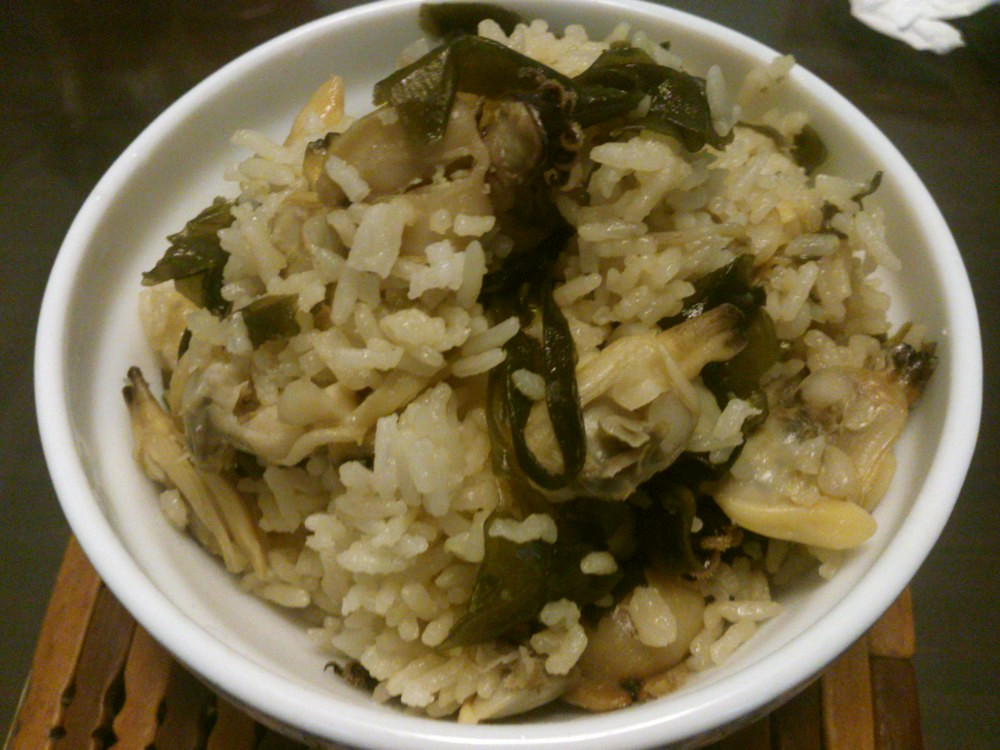
Source: https://cookpad.com/recipe/4019640
☑〈材料2人分〉
・米 1合
・冷凍しじみのむき身 200ℊ
・乾燥わかめ お好みで
・イカやエビなど(ミックスシーフードでもOK) お好みで
✩醤油 大さじ4
✩みりん 大さじ3~4
✩砂糖 大さじ1
<<How to make>
1) Place the polished rice in the rice cooker along with the seasonings ✩ and add less water than when cooking normally.
2) Add seaweed and mix.
3) Place the frozen clams and your favorite seafood on top of the rice and immediately turn on the rice cooker.
4) Once cooked, mix gently and it's done.
Increase the flavor with frozen clams! Nibidashi with Komatsuna
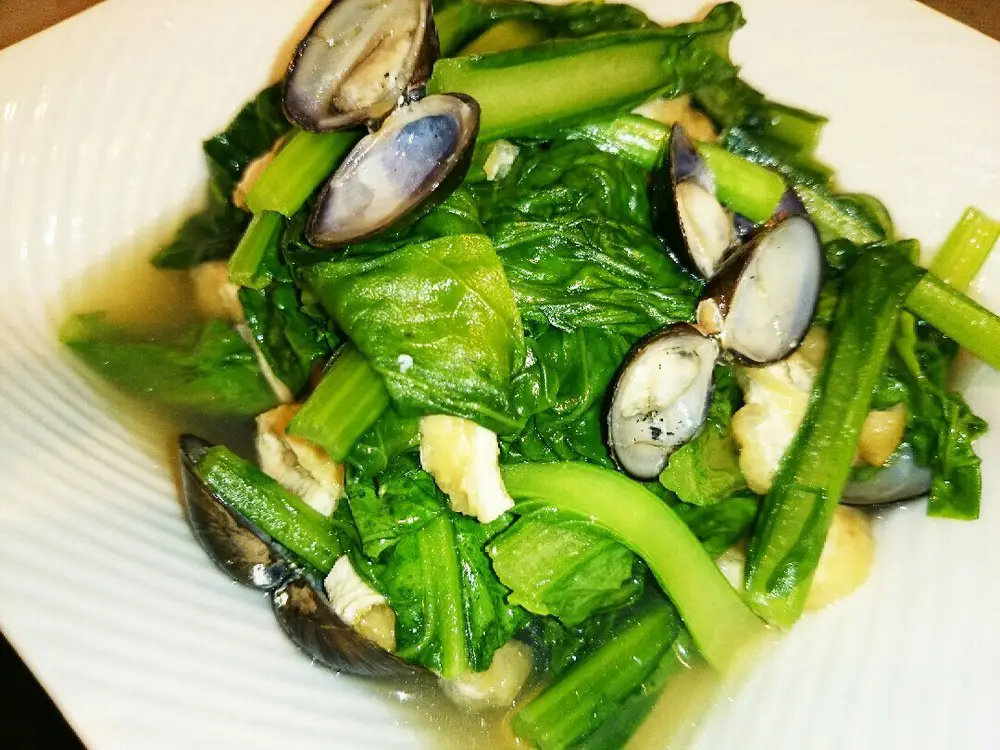
Source: https://cookpad.com/recipe/3108321
☑〈材料4人分〉
・小松菜 3束
・冷凍しじみ 250ℊ
・油揚げ 1枚
✩水 800㏄
✩みりん 50㏄
✩醤油 40㏄
<<How to make>
1) Wash the komatsuna thoroughly, cut off the roots, and cut into 3cm lengths.
2) Place the fried tofu between paper towels, press down on top to remove oil, then cut in half lengthwise and cut into 8mm wide strips.
3) Put the ingredients from ✩ into a pot and bring to a boil. Add the frozen clams that have been lightly washed with water. Once the shells open, take them out.
4) Add the fried tofu and komatsuna stems to the pot from step 3) and bring to a boil.
5) Once the komatsuna stems are cooked, add the leaves and simmer.
6) After serving in a bowl, remove from step 3) and top with the shijimi.
Conclusion
What do you think about how to freeze clams and 5 recommended recipes?
Although clams require a lot of preparation and are a pain to eat because of their small size, they are an excellent ingredient that is highly nutritious and packed with flavor.
It is recommended to freeze clams, as they are not only quick and convenient to use and can be stored for a long time, but also have more nutrients and flavor.
Fresh clams have high nutritional value and are a food that you should actively consume for your health, so it would be a good idea to store them wisely in the freezer so that you have more opportunities to eat them.
From now on, please make it a habit to buy a lot of freshwater clams when they are cheap, prepare them in bulk, and freeze them.
>> [What is the expiry date of frozen foods? ] Points to consider for eating deliciously
>> [What is the expiry date of frozen foods? ] Ready-to-use frozen bean knowledge








![[Storage period increased by 30 times! ] Achieving a stable supply of raw whitebait!](https://shunkashutou.com/wp-content/uploads/2016/11/579c55e6d32e1385c250e8e7c3ed59a71.jpg)
![[Sales increased 100 times! ] rapid freezing the signature menu “Ni-katsu sandwich”!](https://shunkashutou.com/wp-content/uploads/2016/11/IMG_02391.jpg)
![[Horse sashimi] We have significantly reduced waste loss with rapid freezer!](https://shunkashutou.com/wp-content/uploads/2016/11/5fda59d0cbcdabde18e58c3c58c09ed0.jpg)




![[Storage period increased from 3 days to half a year! ] Restaurants are expanding their business using wholesale and mail order!](https://shunkashutou.com/wp-content/uploads/2018/04/66c19942ab4ba346fdb64ccc04cde373.png)
![[Reduce loss from 200 kg of oysters to zero] Improve loss and expand business with rapid freezer](https://shunkashutou.com/wp-content/uploads/2018/06/19785ca583a8d3c4041c7c192d041b0d.jpg)














![Freezing garlic, storage period, and 5 recipes! [Explanation with photos! ]](https://shunkashutou.com/wp-content/uploads/2023/10/30693b4b122ff6c57afff367b35bc861.jpg)
![[Explanation with photos! ] Introducing the method and recipe for freezing komatsuna](https://shunkashutou.com/wp-content/uploads/2023/09/5d2a19a6e6cfb5ad0329d8fce162f292.jpg)
![[How to freeze and store clams to improve nutrition] How to freeze and thaw clams and 5 recipes!](https://shunkashutou.com/wp-content/uploads/2023/07/ecfa61188368277d34c95d6667bf15fe.jpg)
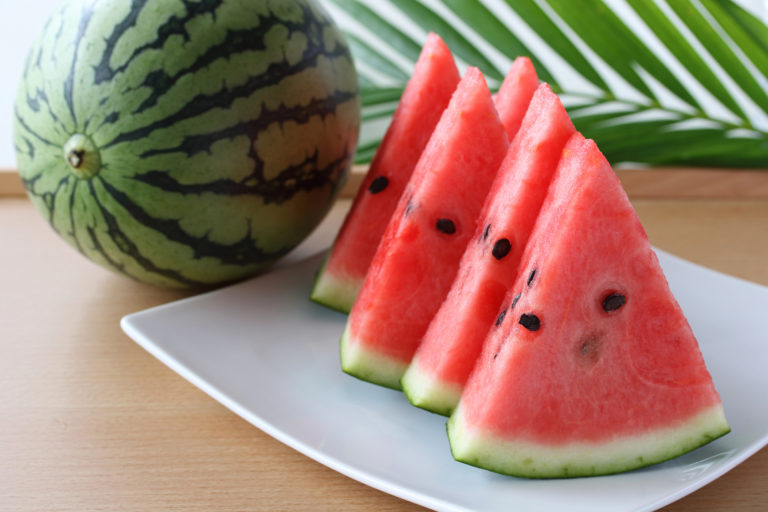
![Introducing how to freeze burdock and recipes [Explanation with photos! ]](https://shunkashutou.com/wp-content/uploads/2023/09/0812c28da547fe267723143edad2bfed.jpg)
![How to freeze parsley, nutrition, and 5 easy recipes! [Solved with photos! ]](https://shunkashutou.com/wp-content/uploads/2023/09/paseri-768x513-1.jpg)
![How to freeze mizuna and 5 recipes! [Explanation with photos! ]](https://shunkashutou.com/wp-content/uploads/2023/09/b22c59559b7316b40d35d2555434791e.jpg)
![[Can it be frozen? ] Introducing how to freeze ham and delicious recipes!](https://shunkashutou.com/wp-content/uploads/2023/09/867d7b924bf17d95bedba60a6503e00e.jpg)
![[Explanation of how to bake! ] How to freeze gyoza, storage period, and arranged recipes](https://shunkashutou.com/wp-content/uploads/2023/09/c3dca78e4f555cfbcfe88d6e13b19bba.jpg)
![[Can it be frozen? ] How to freeze mashed potatoes, how long they can be stored, and how to use them](https://shunkashutou.com/wp-content/uploads/2023/09/b7f3f25102051473b7c2f9452840a6f4.jpg)

![[Explanation with photos! ] How to freeze pumpkin, storage period, and 5 recipes](https://shunkashutou.com/wp-content/uploads/2023/10/36d3edf3acec7cf27351bd1211e770ac.jpg)
![[Can it be frozen? ] How to freeze cabbage rolls, storage period, and recipe](https://shunkashutou.com/wp-content/uploads/2023/10/f5c1db9a17ef7843ffd45f5ccb160ed5.jpg)
![[Can it be frozen? ] How to freeze bacon, storage period, and 5 recipes!](https://shunkashutou.com/wp-content/uploads/2023/07/52dff5bc109cd400879fbf9bb35b3856.jpg)
![[How long does it last? ] How to freeze cooked rice and how long it can be stored](https://shunkashutou.com/wp-content/uploads/2023/10/7e31499b015d58f220536e3274a41bf2.jpg)
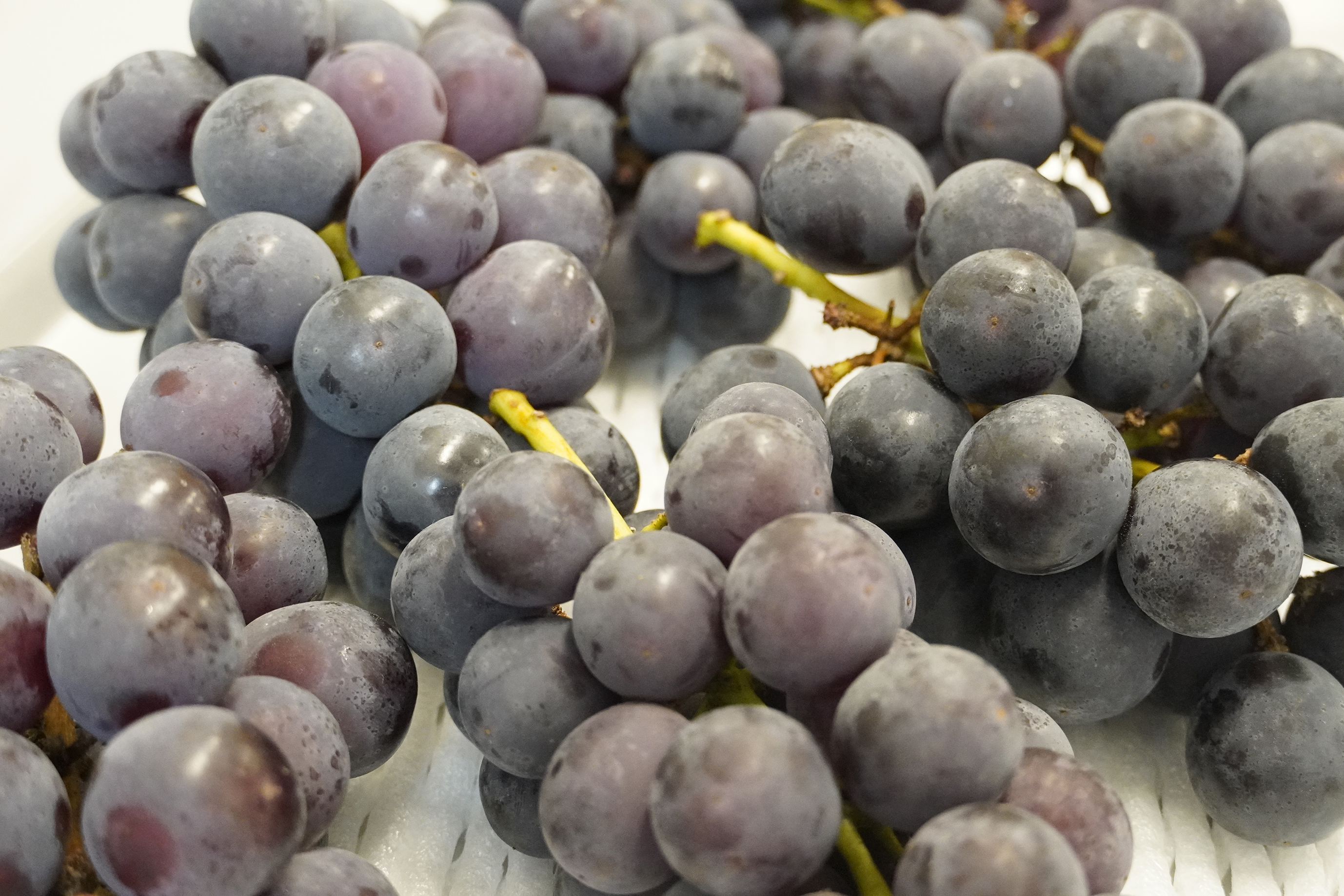
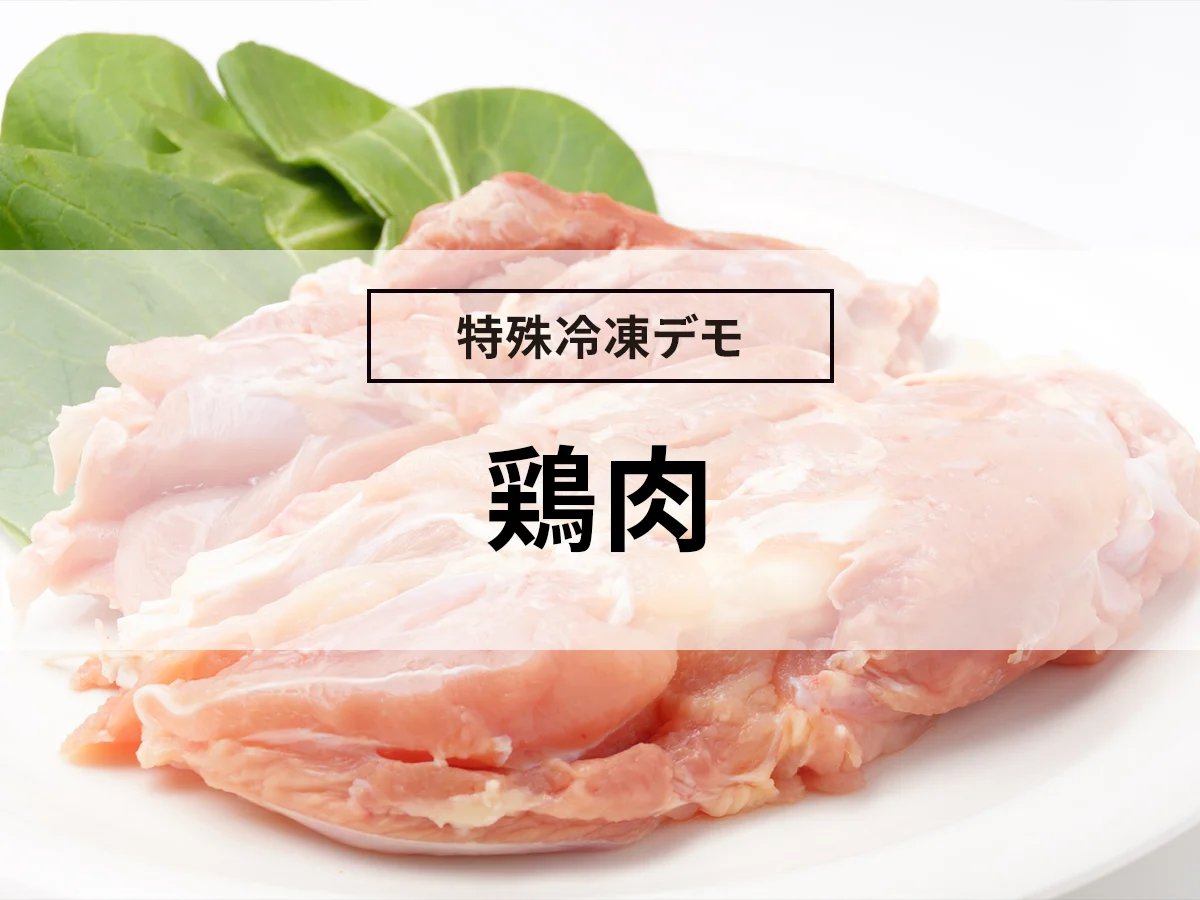
![[Includes recommendations by industry] Summary of types and benefits of small rapid freezer](https://shunkashutou.com/wp-content/uploads/2020/12/smallsize.jpg)
![[Freezing for a long time] 3 points to keep in mind when preserving vegetables](https://shunkashutou.com/wp-content/uploads/2023/08/5a2668284473e2bd93d9ade88bad2c0b.jpg)

![[Various recipes] 3 tips for using frozen minced meat deliciously](https://shunkashutou.com/wp-content/uploads/2023/08/e9b2fc255393916ab79ea8b7fa0807d3.jpg)
![[Nutrition remains the same! ? ] Introducing how to use frozen vegetables and recommended recipes](https://shunkashutou.com/wp-content/uploads/2023/10/vegetables-reito-1-1-768x511-1.jpg)
![[Great at sushi restaurants! ] How to increase sales by rapid freezing sushi](https://shunkashutou.com/wp-content/uploads/2016/04/0d3e7f8a3cefa0aefe0a8452e414db21.jpg)
![[Explanation with photos! ] How to freeze mackerel fillets and 5 carefully selected recipes!](https://shunkashutou.com/wp-content/uploads/2023/10/bf45f102162a8d43387d3a8d3e538034.jpg)
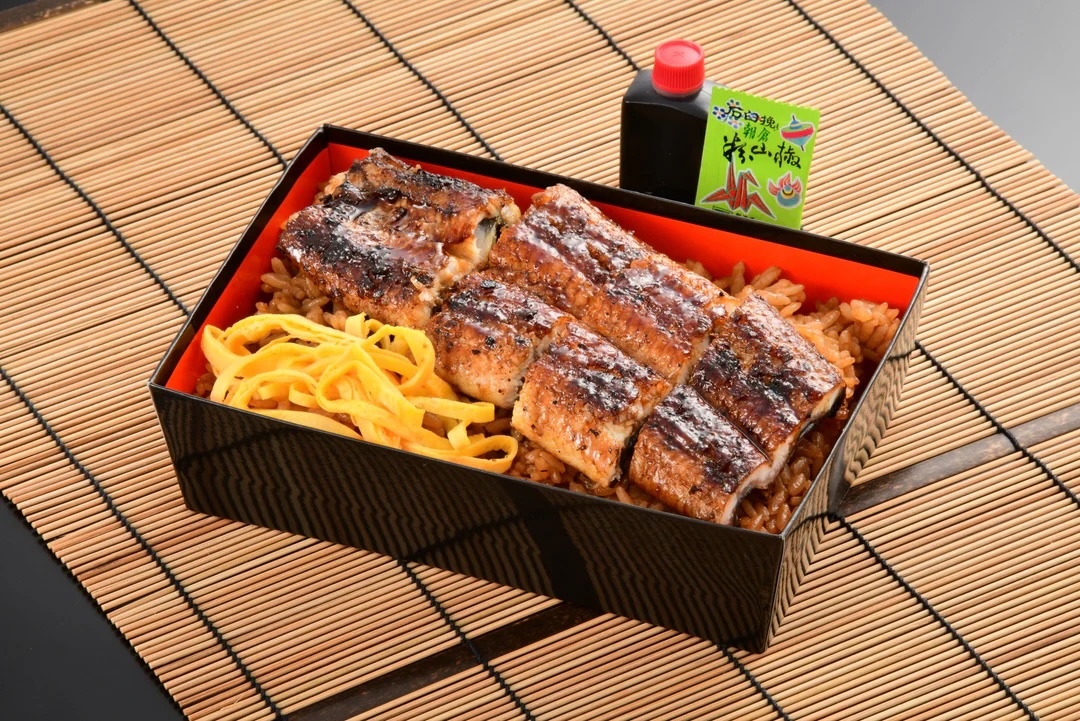
![[Explaining how to freeze fish! ] Introducing storage period and thawing method!](https://shunkashutou.com/wp-content/uploads/2023/08/a794d4ac4e5f56cd881ba06a0edf9449.jpg)
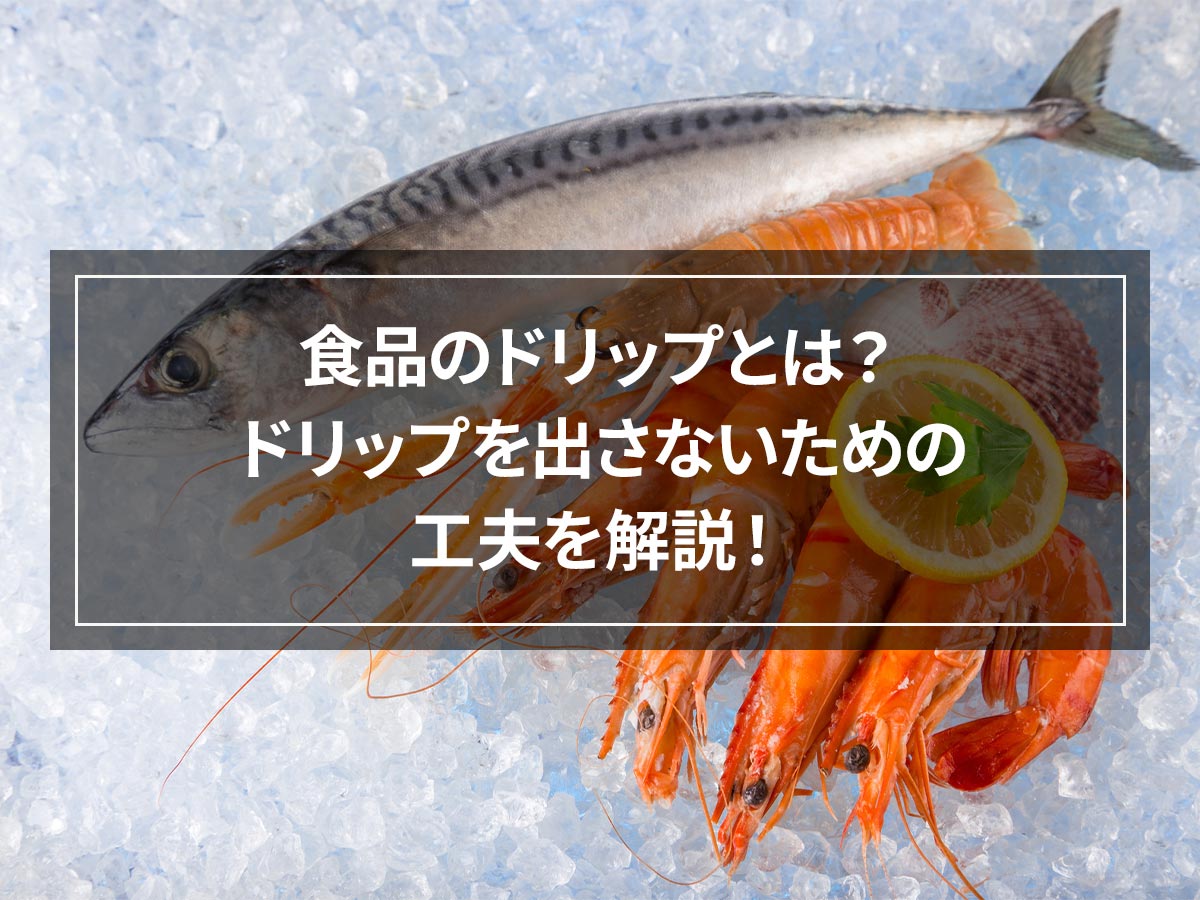
![[Make frozen oysters even more delicious! ] Correct thawing method and usage recipes](https://shunkashutou.com/wp-content/uploads/2023/10/5855c6e6d6dbdb298f86405b4b522329.jpg)

![[For vegetable processors] What is the blanching process that improves the quality of frozen vegetables?](https://shunkashutou.com/wp-content/uploads/2016/09/ad38a1a4c704bc39303ac1864f5b0b8d.jpg)
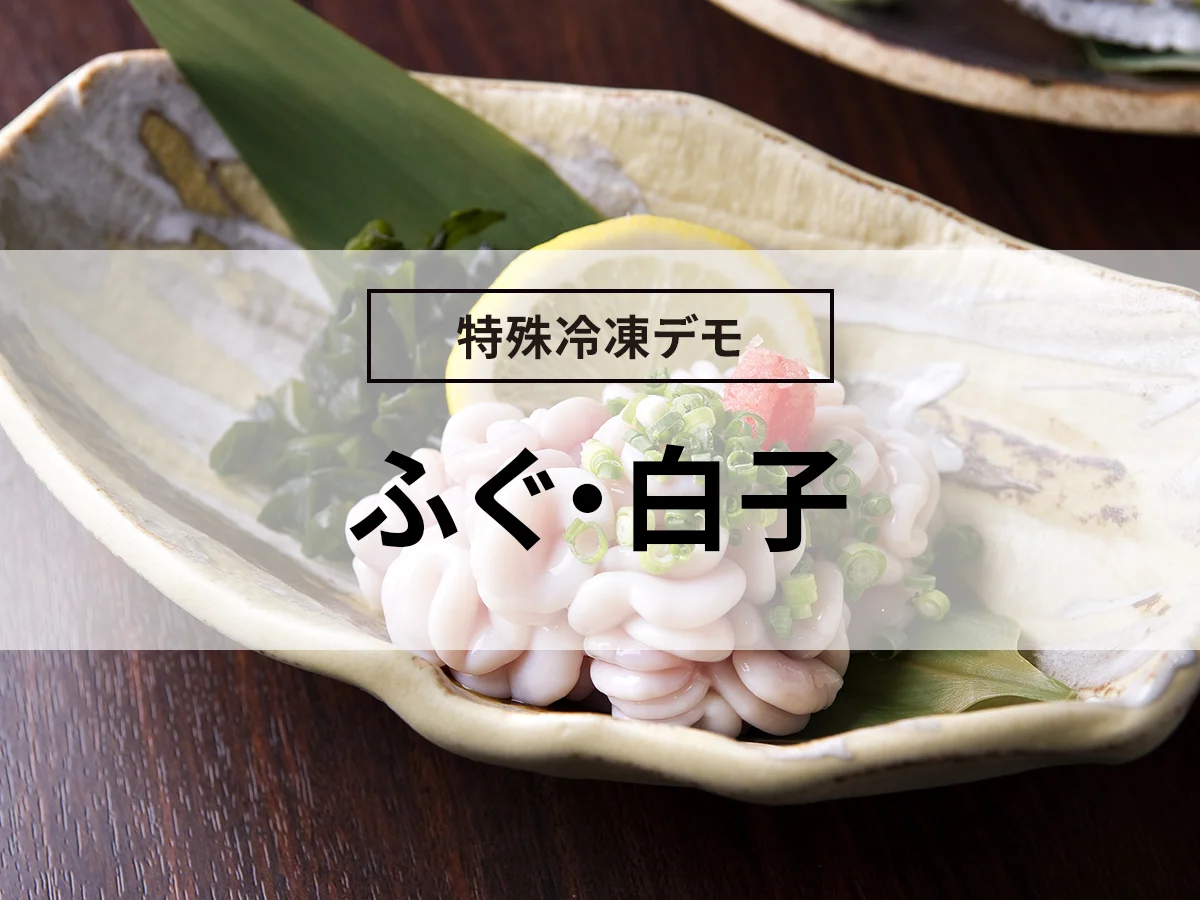
![[Explanation with photos] How to freeze octopus, storage period, and 5 recipes!](https://shunkashutou.com/wp-content/uploads/2023/10/5128a2b3fa3cc254cffab87821372215.jpg)
![[Need to know] 7 points to thaw frozen crab deliciously](https://shunkashutou.com/wp-content/uploads/2023/08/394440560c05fb5b512d75b81a3fae4f.jpg)

![[Successful example of rapid freezing] Efforts of Yuko Fisheries Cooperative and regional revitalization by women](https://shunkashutou.com/wp-content/uploads/2024/10/68950ce21415f187d34a8a1d5b48956a.webp)
![[Explanation with photos! ] How to freeze saury, storage period, and 5 recipes!](https://shunkashutou.com/wp-content/uploads/2023/10/fff0f92d808aca2392b3eb576f218f08.jpg)
![[Delicious frozen squid recipe! ] Tips on how to eat squid deliciously and without waste](https://shunkashutou.com/wp-content/uploads/2023/10/f3bc339b6bcaff01bd8e2aaa4257acfe.jpg)
![[Can it be frozen? ] Introducing the recipe and how to freeze potato salad!](https://shunkashutou.com/wp-content/uploads/2023/10/3c640cd23d65764c14f701d25970ed59.jpg)
![[Can it be frozen? ] Introducing how to freeze kamaboko and how to remake it](https://shunkashutou.com/wp-content/uploads/2023/09/6d2830823df2896a1601685353b0fdf5.jpg)
![How to freeze celery, nutrition, and 5 recipes! [Explanation with photos! ]](https://shunkashutou.com/wp-content/uploads/2023/09/serori-768x512-1.jpg)
![Explaining how to freeze tempura with photos! [Storage period, thawing, carefully selected recipes]](https://shunkashutou.com/wp-content/uploads/2023/10/51f33cde78d02d01a9e827132e4f069d.jpg)
![Introducing how to freeze lettuce and recipes [Explanation with photos! ]](https://shunkashutou.com/wp-content/uploads/2023/09/e550b4a0d886ba3aa277d5d8fc87ba73.jpg)

![[Fisheries/Fisheries Cooperative] Advantages and success stories of introducing rapid freezer](https://shunkashutou.com/wp-content/uploads/2015/05/jirei_suisan_img_01.jpg)
![[Current situation and countermeasures for food loss] What are efforts to reduce food waste and rapid freezing? ?](https://shunkashutou.com/wp-content/uploads/2024/04/ddc2c5b7fa32b837dcbdcd1ab68e9087.jpg)
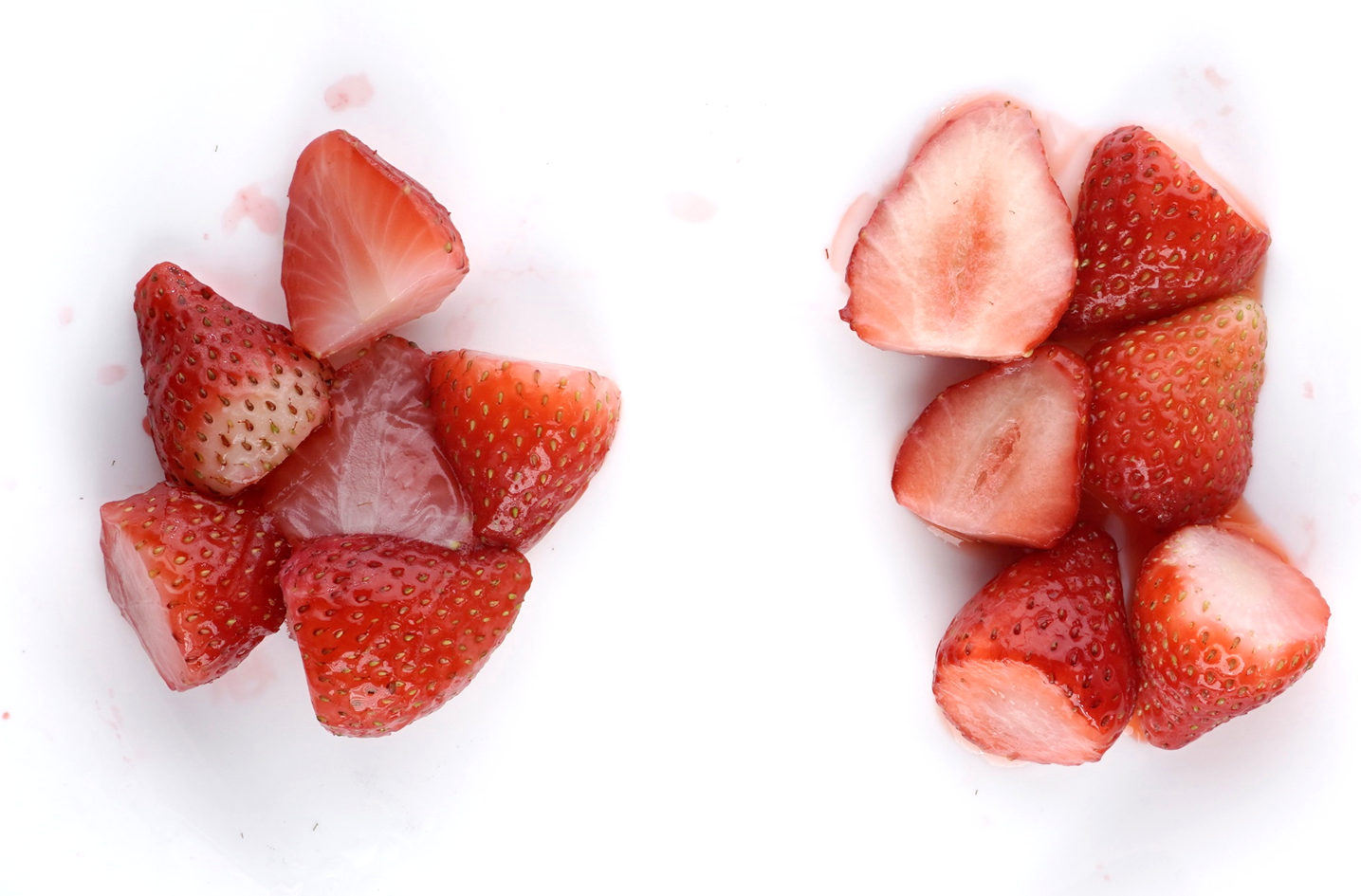
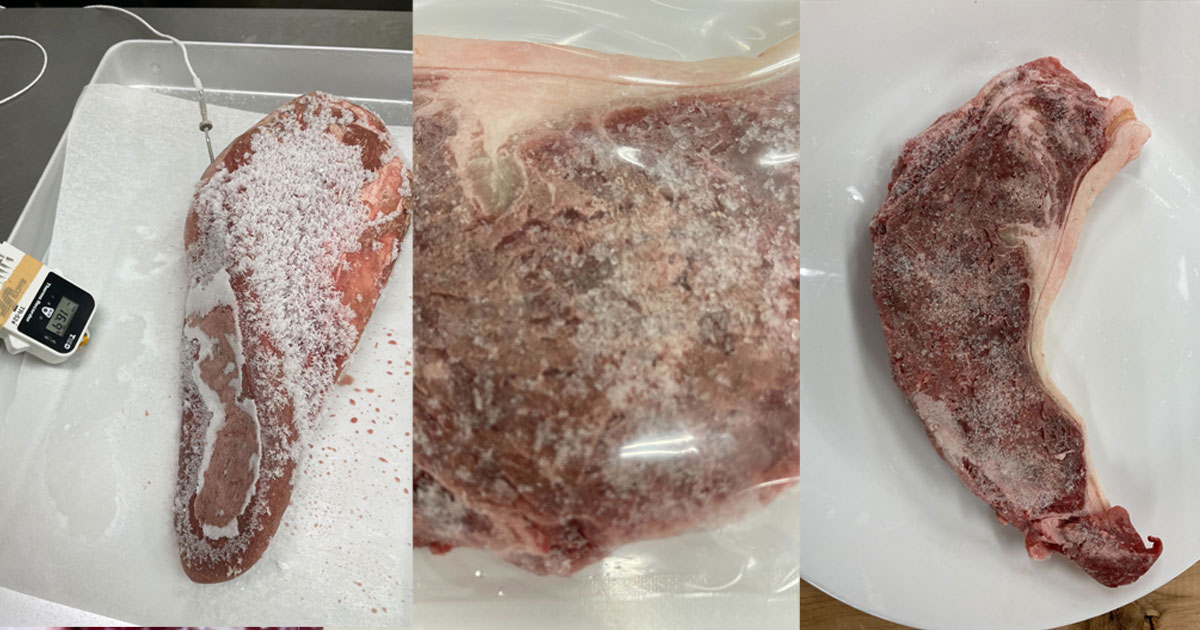
![[Explanation with photos] How to freeze winter melon, storage period, and 5 recipes!](https://shunkashutou.com/wp-content/uploads/2023/10/8c301e3fcfbb9c7f457d8b05dfea902d.jpg)
![[Save onions in the freezer! ] Introducing storage methods and recipes with photos](https://shunkashutou.com/wp-content/uploads/2023/10/9d2c1259f1c42d7a0e3b61af361e5da8.jpg)
![[Thorough guide to preserving meat] Preservation methods, expiration dates, thawing methods, rapid freezing](https://shunkashutou.com/wp-content/uploads/2023/09/ec61889773cfed9c75aa97d9ca6c96dd-1.jpg)
![[Introducing tricks and time-saving techniques! ] How to freeze ginger-yaki, carefully selected recipes](https://shunkashutou.com/wp-content/uploads/2023/10/ef145c31655c5774469e05b5e892207b.jpg)
![Explaining how to freeze Maitake mushrooms, their nutritional value, and recipes! [Explanation with photos! ]](https://shunkashutou.com/wp-content/uploads/2023/09/9face03809f7fcaf2e3599773b2e8c80.jpg)
![[With photos] Lemon freezing and storage period, recipes for how to use frozen lemons](https://shunkashutou.com/wp-content/uploads/2023/09/21a01b705aff194717e200bf6dc6ce5b.jpg)
![Introducing recipes and methods for freezing and thawing bananas [Explanation with photos! ]](https://shunkashutou.com/wp-content/uploads/2023/07/494e7567627fb35e47ee5cb0e06e142c.jpg)
![Introducing recipes and methods for good frozen preservation of okra [Explanation with photos! ]](https://shunkashutou.com/wp-content/uploads/2023/10/616c25d6c59f80c7a09effe2edc5ef92.jpg)
![[Introducing trick techniques! ] How to freeze and thaw pancakes](https://shunkashutou.com/wp-content/uploads/2023/09/4f2e9d04709f0c4e5c1769985a49ac8b.jpg)
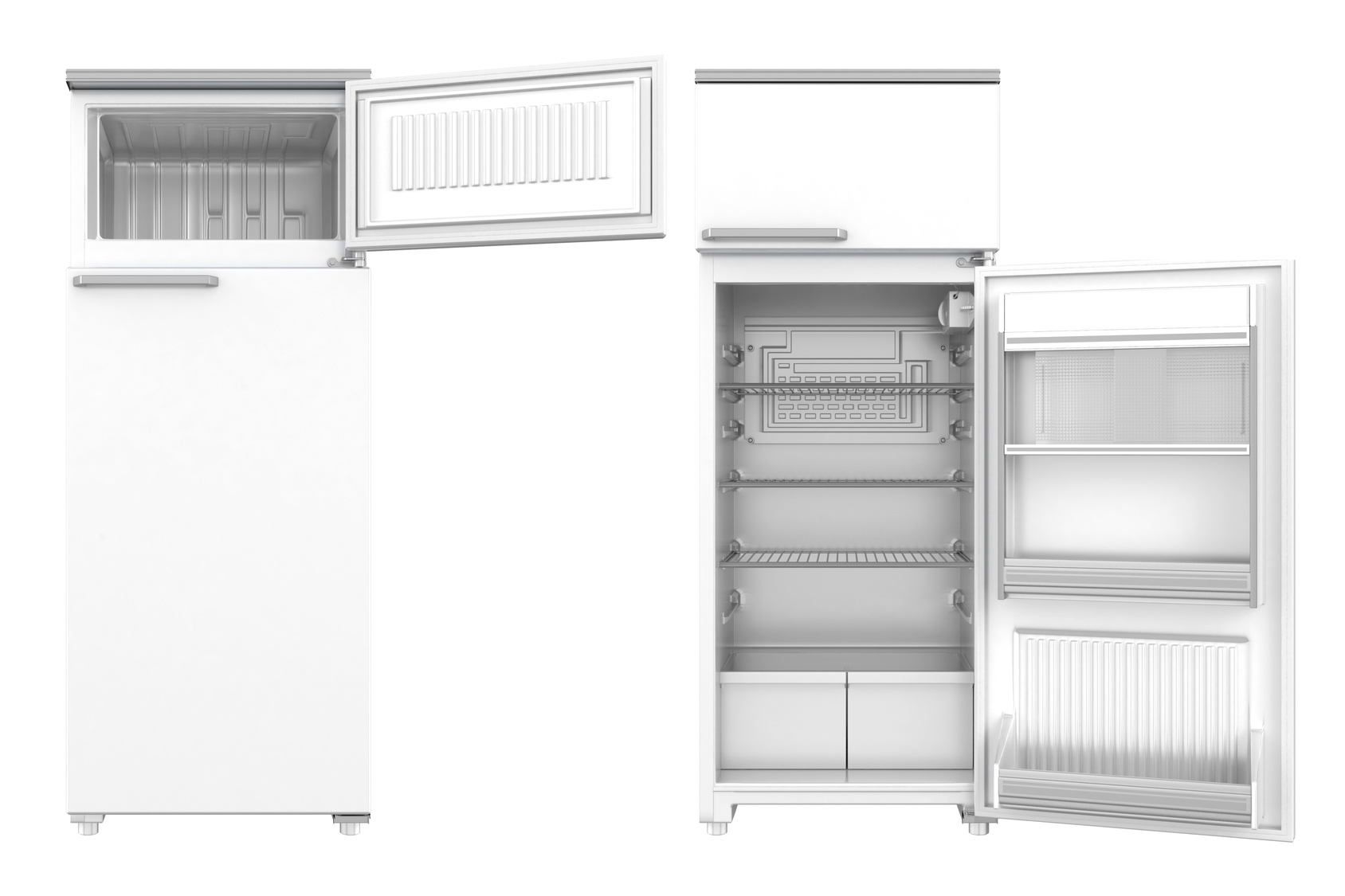
![How to freeze/thaw turnips, storage period, and 5 recipes [Explanation with photos]](https://shunkashutou.com/wp-content/uploads/2023/09/eae0789d04cc4971cf4232963b4d2231-1.jpg)
![Shock freezer prices and reasons why we can't recommend used ones [What's the difference from a blast chiller? ]](https://shunkashutou.com/wp-content/uploads/2019/09/f76c6907f41d0b092e20d0924e5f27c9.webp)
![How to freeze sweet potatoes, storage period, and 5 recipes! [Explanation with photos! ]](https://shunkashutou.com/wp-content/uploads/2023/10/36256af24531b73a036523ba73bdf9ec.jpg)
![[Should be frozen! ? ] How to freeze and thaw bread, 5 carefully selected recipes!](https://shunkashutou.com/wp-content/uploads/2023/10/4691acc32cab80284fa0cddf72d58e95.jpg)
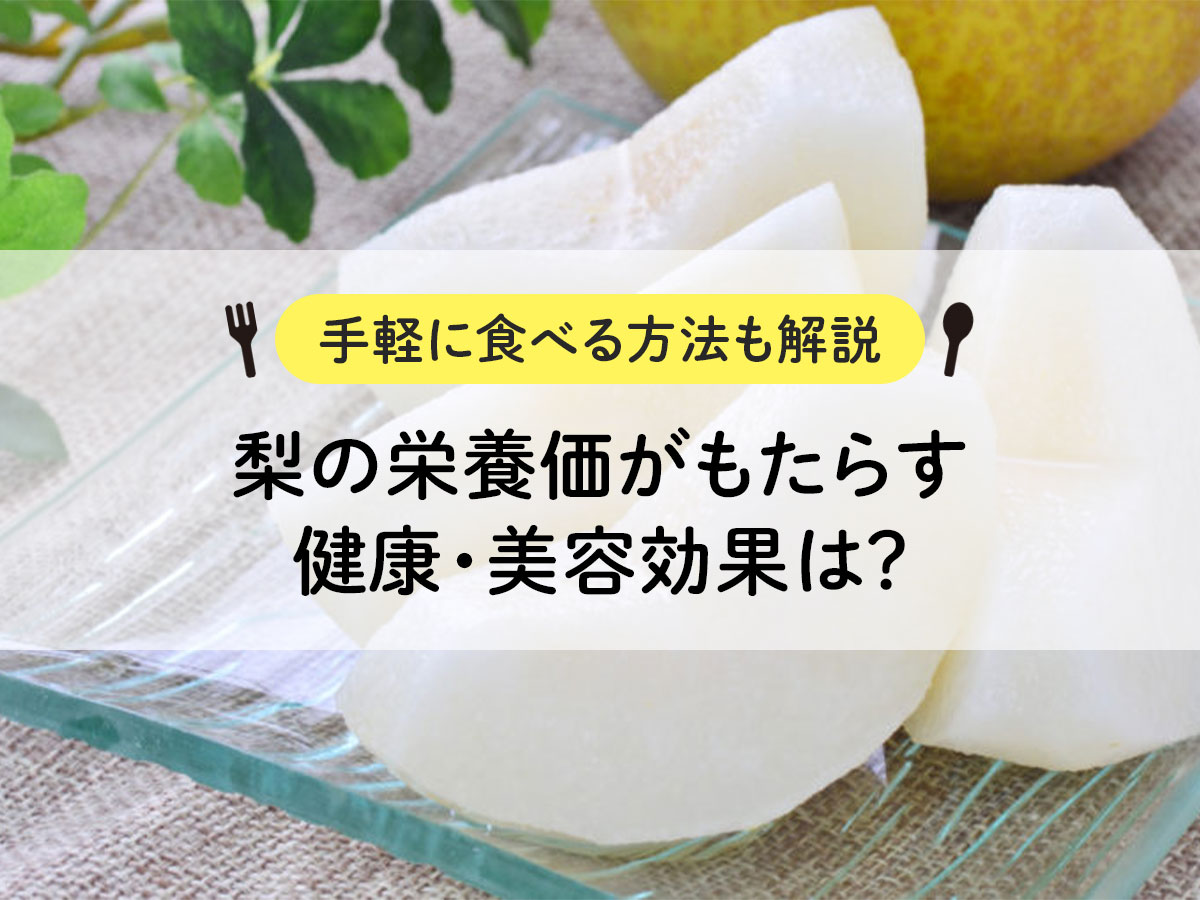
![Introducing how to freeze/thaw salmon roe and how long to store it [includes carefully selected recipes]](https://shunkashutou.com/wp-content/uploads/2023/09/236b884b68d07d2f5983f2b9ea66583d.jpg)
![[Can it be frozen? ] How to freeze fresh cream, storage period, thawing method and 5 recipes!](https://shunkashutou.com/wp-content/uploads/2023/09/1887f5bd8f2d7f9ef1d88754f2c5bcc4.jpg)
![[Explanation with photos! ] How to freeze and fry croquettes, 5 carefully selected recipes](https://shunkashutou.com/wp-content/uploads/2023/09/b364ee97a71777f9dd2e35fddbbdda72.jpg)
![[Explanation with photos! ] How to freeze beef, storage period, and 5 recipes!](https://shunkashutou.com/wp-content/uploads/2023/07/8717f2a867f52157bab47841b0f29019.jpg)
![How to freeze chicken, storage period, and 5 recipes! [Explanation with photos! ]](https://shunkashutou.com/wp-content/uploads/2023/08/01f6582931e13522ee0d1ee900be2d1d.jpg)
![[Can it be frozen? ] 5 recipes for yogurt freezing and shelf life!](https://shunkashutou.com/wp-content/uploads/2023/10/yogurt-catch-768x512-1.jpg)
![Introducing how to freeze and thaw whitebait, as well as recipes for its use [Full of nutrition! ]](https://shunkashutou.com/wp-content/uploads/2023/10/04d15012ec36f91a5574f63dfa9d4771.jpg)
![[Recommended for lunch boxes too! ] Introducing recipes and methods for freezing pasta!](https://shunkashutou.com/wp-content/uploads/2023/10/93f66b71b92cbe1085d41c4ed80d7726.jpg)

![How to freeze bitter gourd and 5 recipes! [Explanation with photos! ]](https://shunkashutou.com/wp-content/uploads/2023/09/8fe0cb793c93d4fd4c26f352d17e5b87.jpg)
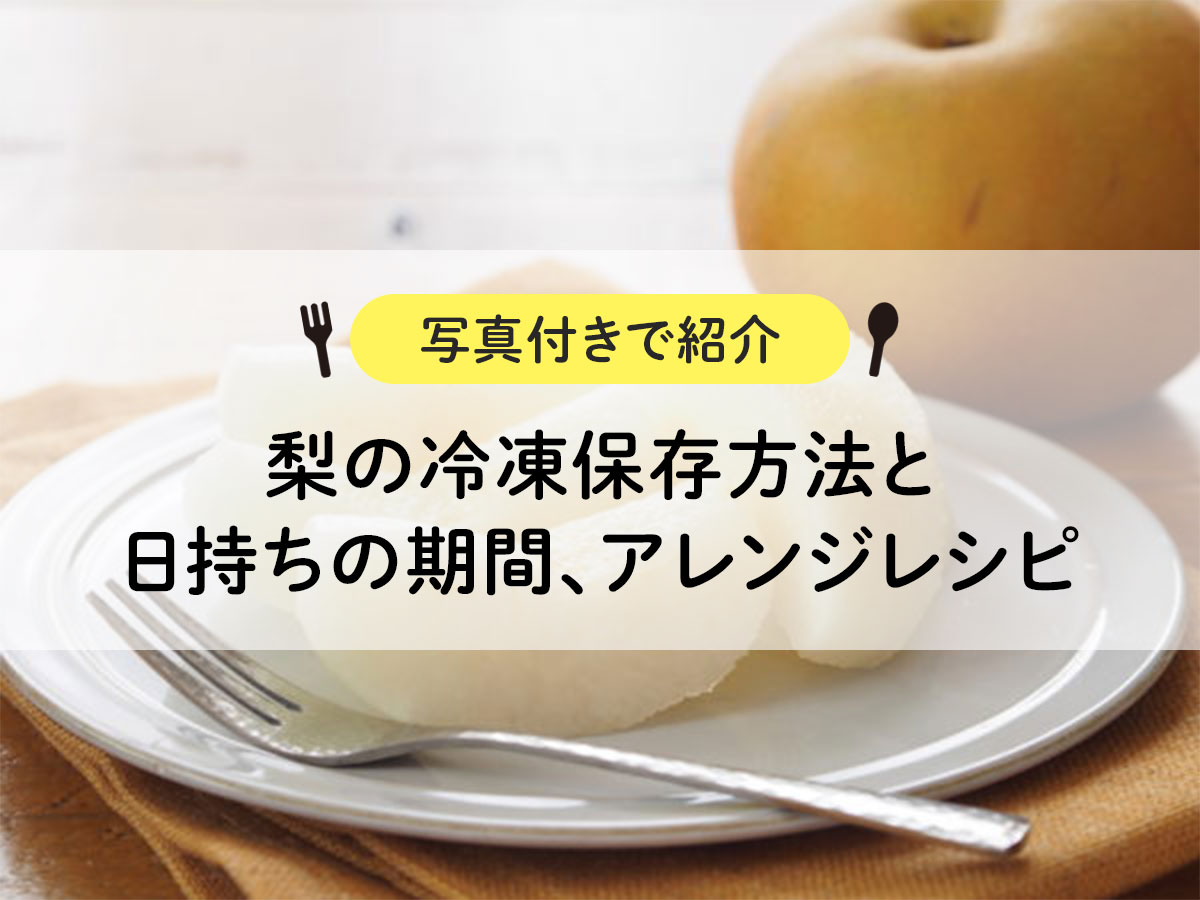
![Introducing how to freeze fried chicken and a delicious recipe [Explaining tricks and techniques]](https://shunkashutou.com/wp-content/uploads/2023/09/2d15a108b8d7de5b4811f69c9bc8b8f1.jpg)
![How to freeze tomatoes, storage period, and 5 recipes! [Explanation with photos! ]](https://shunkashutou.com/wp-content/uploads/2023/10/tomato-768x513-1.jpg)
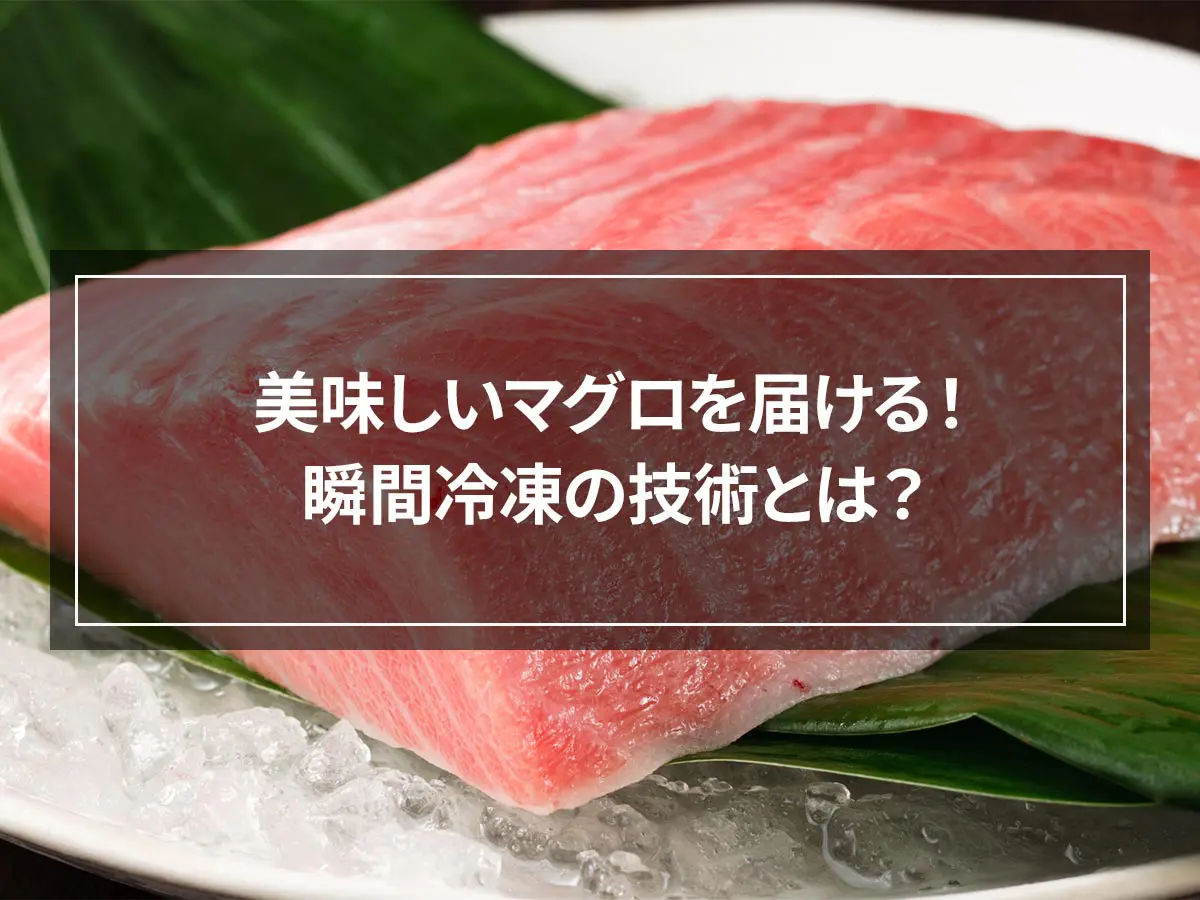


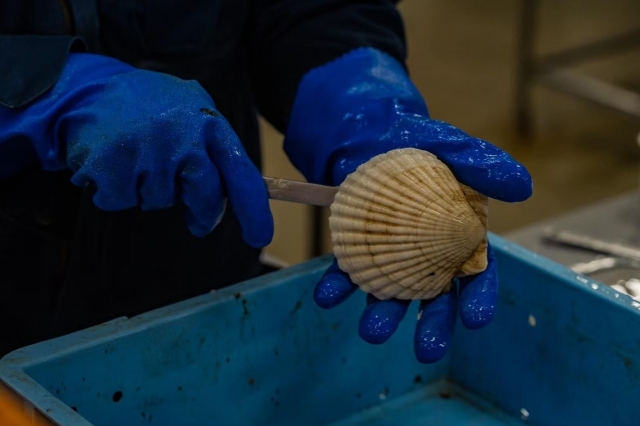
![How to freeze mushroom mushrooms, storage period, and 5 recipes! [Explanation with photos! ]](https://shunkashutou.com/wp-content/uploads/2023/09/4b6ffe2ef040e90085b4ee4f0c3e72a9.jpg)
![[Explanation with photos! ] How to freeze pork, expiration date, and 5 recipes!](https://shunkashutou.com/wp-content/uploads/2023/10/8688cd28f298c3180c30169cec815293.jpg)
![[Labor shortage]The benefits with examples of using rapid freezer](https://shunkashutou.com/wp-content/uploads/2019/04/hitodebusoku-article-main_pc.jpg)
![[Be good at saving money! ] Introducing the method and recipe for freezing fried rice](https://shunkashutou.com/wp-content/uploads/2023/10/mayo-tyahan-1024x768-1.jpg)

![[Explanation of how to fry! ] How to freeze and thaw pork cutlet, remake recipe!](https://shunkashutou.com/wp-content/uploads/2023/10/0a4143ad8ea0cc6bb6fdab8c74fab407.jpg)
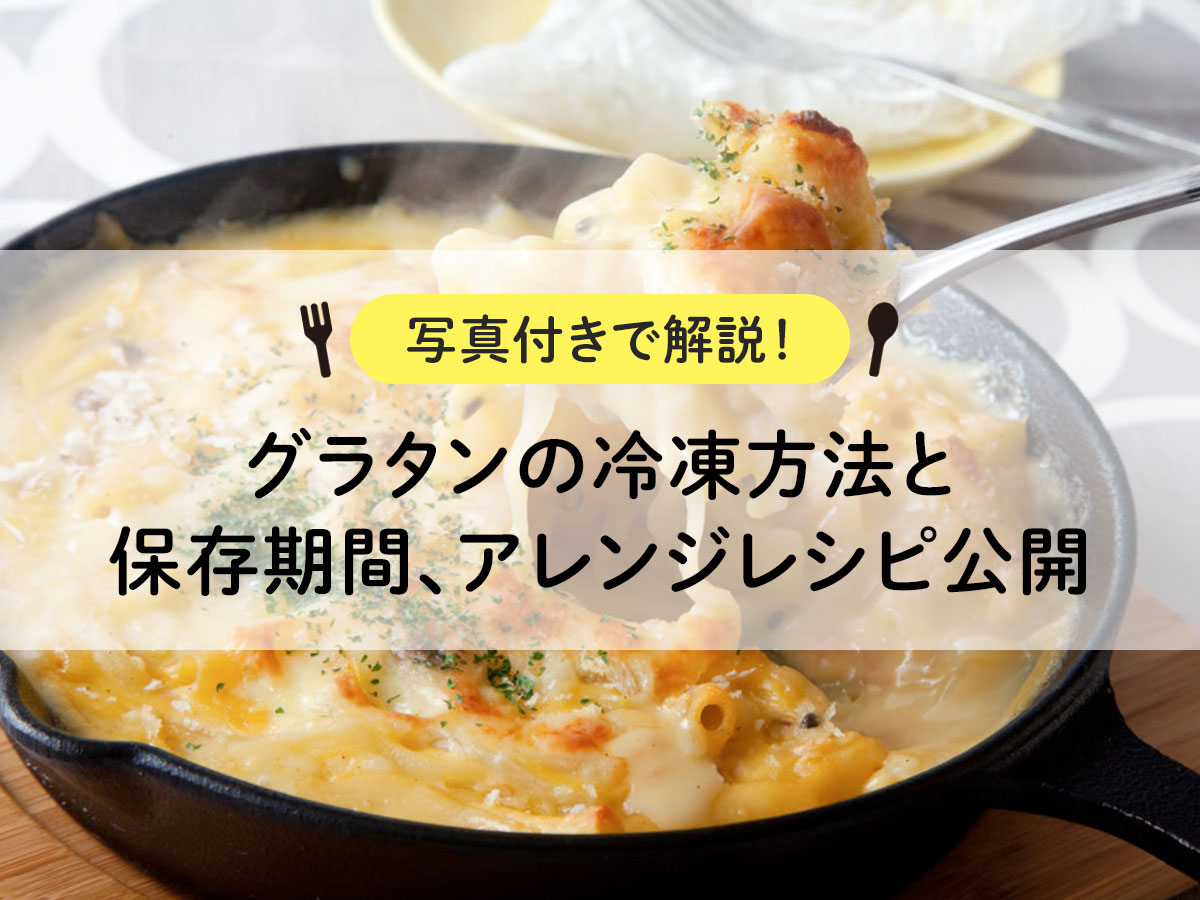

![[Just the meat from the field! ] Introducing how to freeze tofu and meat imitation recipes!](https://shunkashutou.com/wp-content/uploads/2023/10/100675242-768x512-1.jpg)
![[Tips for making egg rolls that can be frozen] Introducing freezing methods, storage periods, and recipes!](https://shunkashutou.com/wp-content/uploads/2023/10/tamagoyaki-768x512-1.jpg)

![Introducing recipes and methods for freezing spinach [Explanation with photos! ]](https://shunkashutou.com/wp-content/uploads/2023/10/spinachh-768x512-1.jpg)
![[Fruit becomes dessert! ] How to freeze kiwi and sweets recipes](https://shunkashutou.com/wp-content/uploads/2023/09/ecc0fc2bc14391ea13ce2e7a43d1416e.jpg)
![[Lunch boxes are easy! ] Techniques and recipes for effectively using frozen side dishes](https://shunkashutou.com/wp-content/uploads/2023/07/reitou-bento-1024x682-1.jpg)
![Explaining how to freeze garland chrysanthemums with photos! [Defrosting and storage period, 5 recipes]](https://shunkashutou.com/wp-content/uploads/2023/10/syungiku-catch-768x512-1.jpg)




